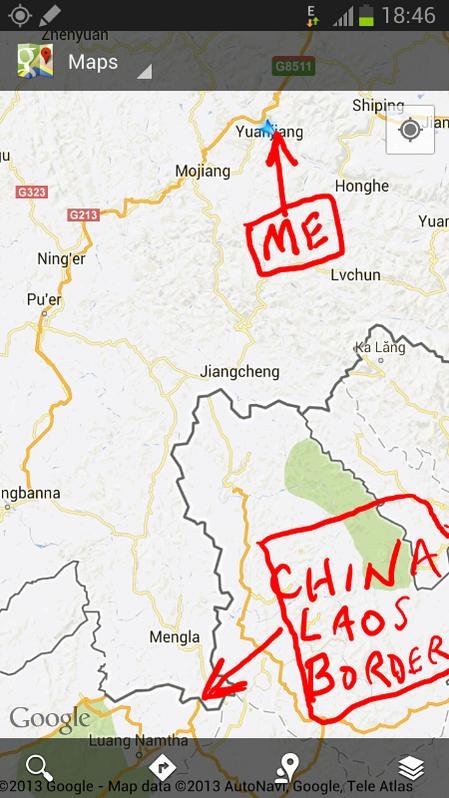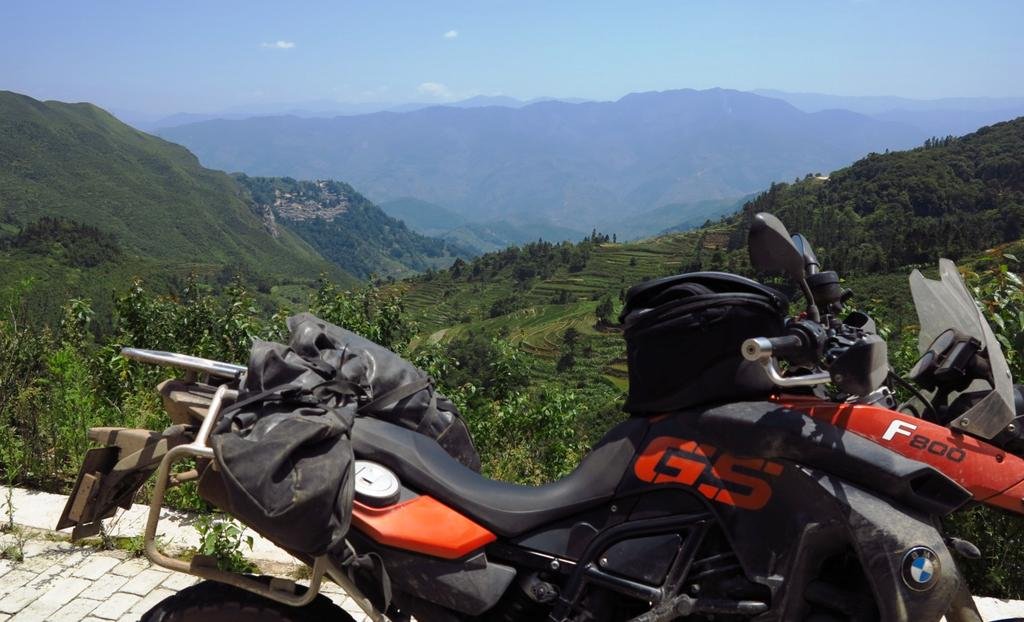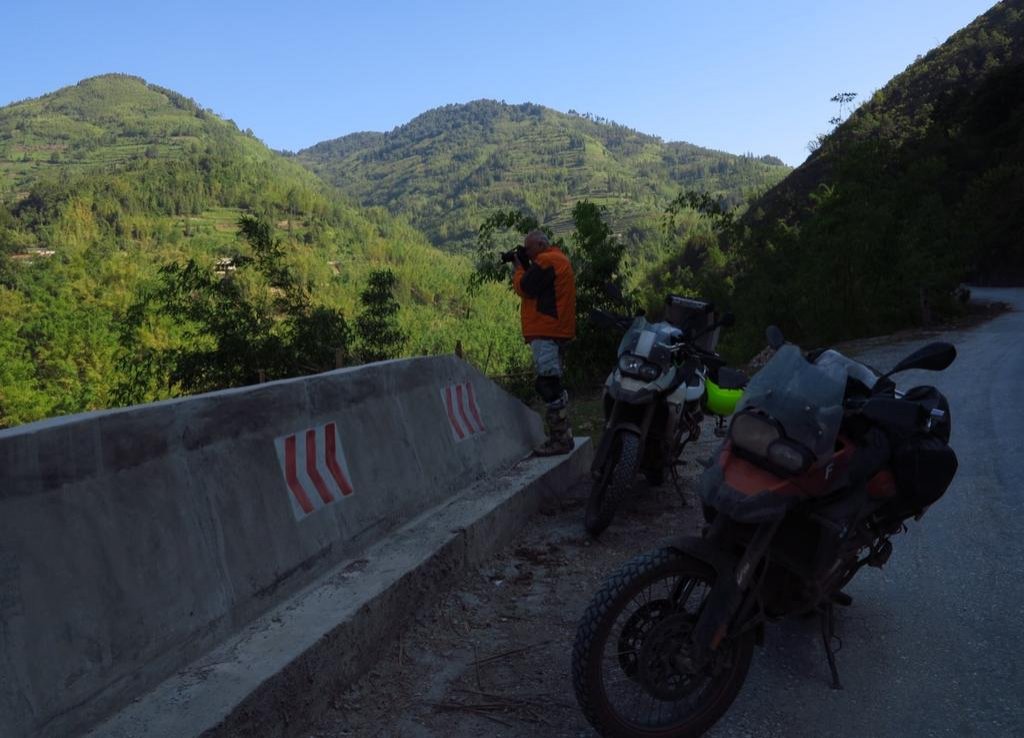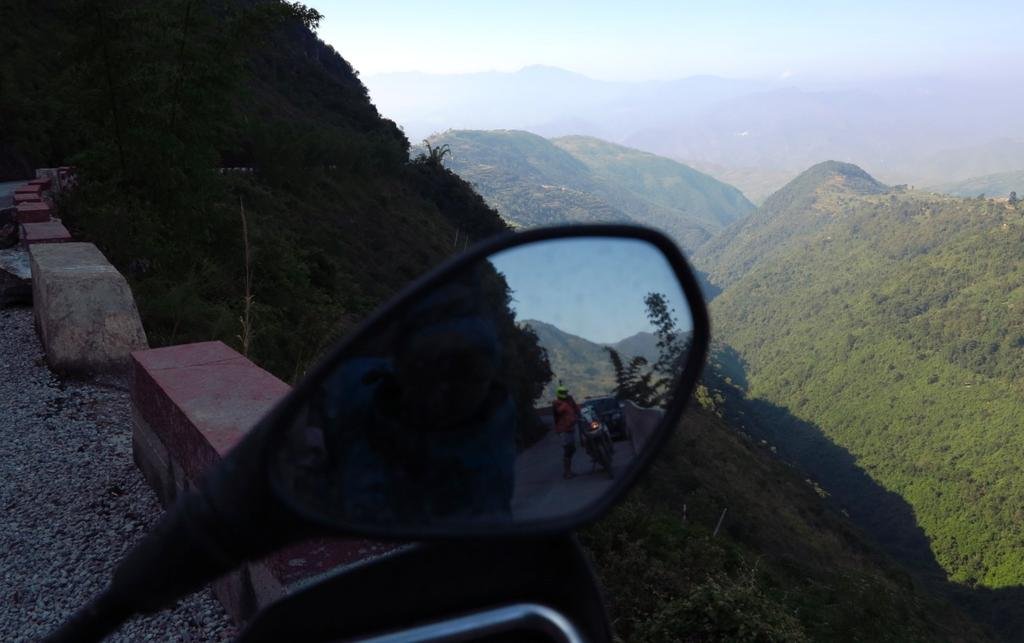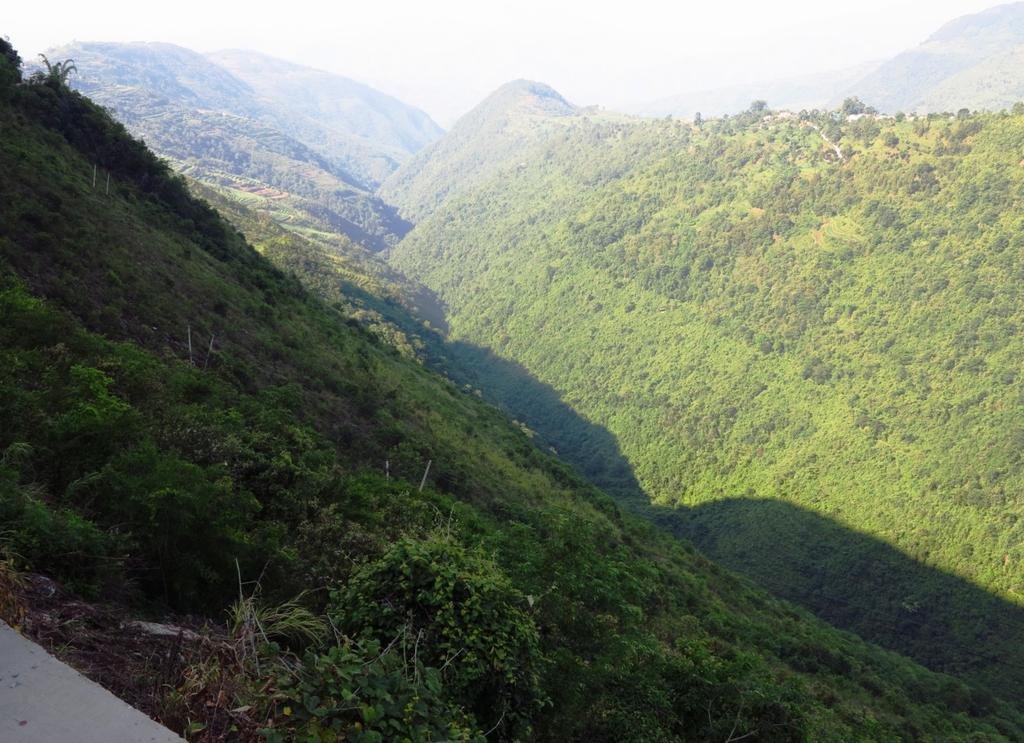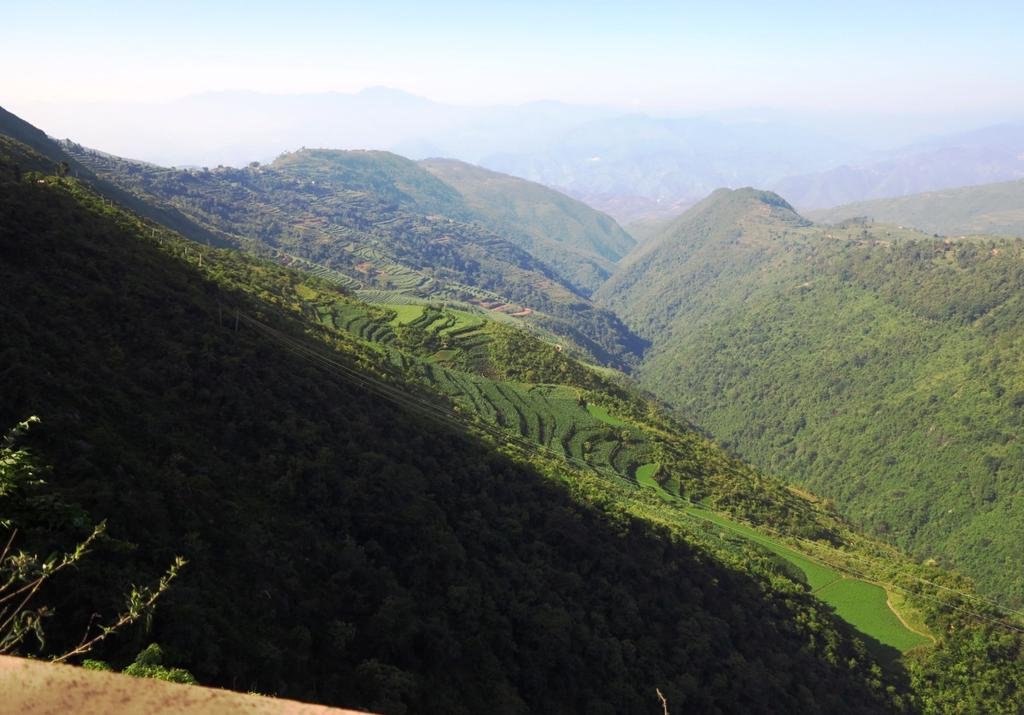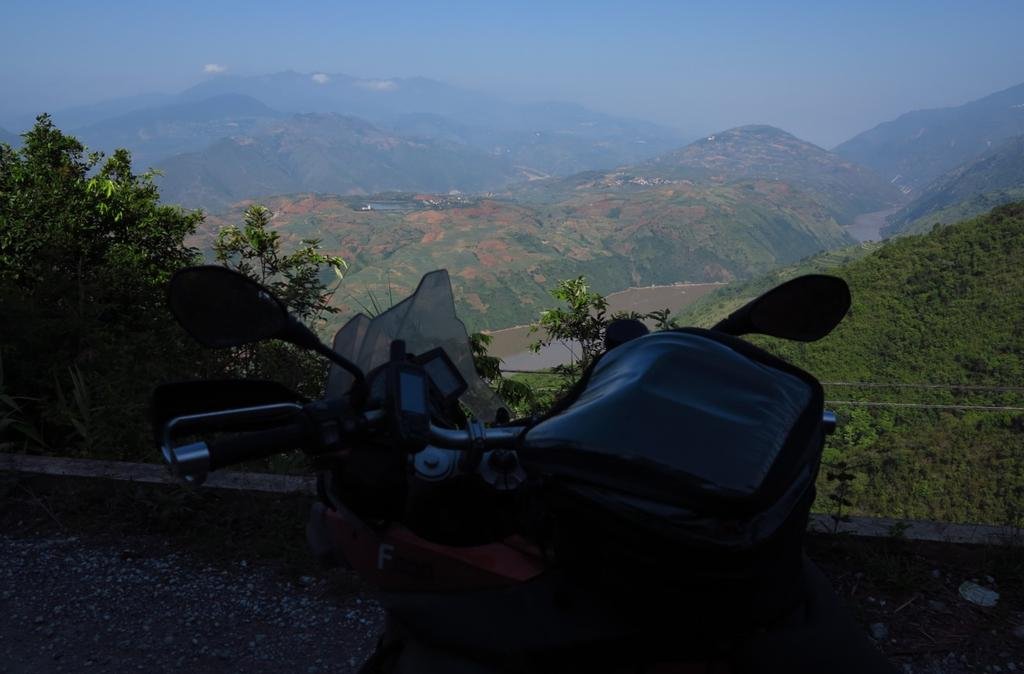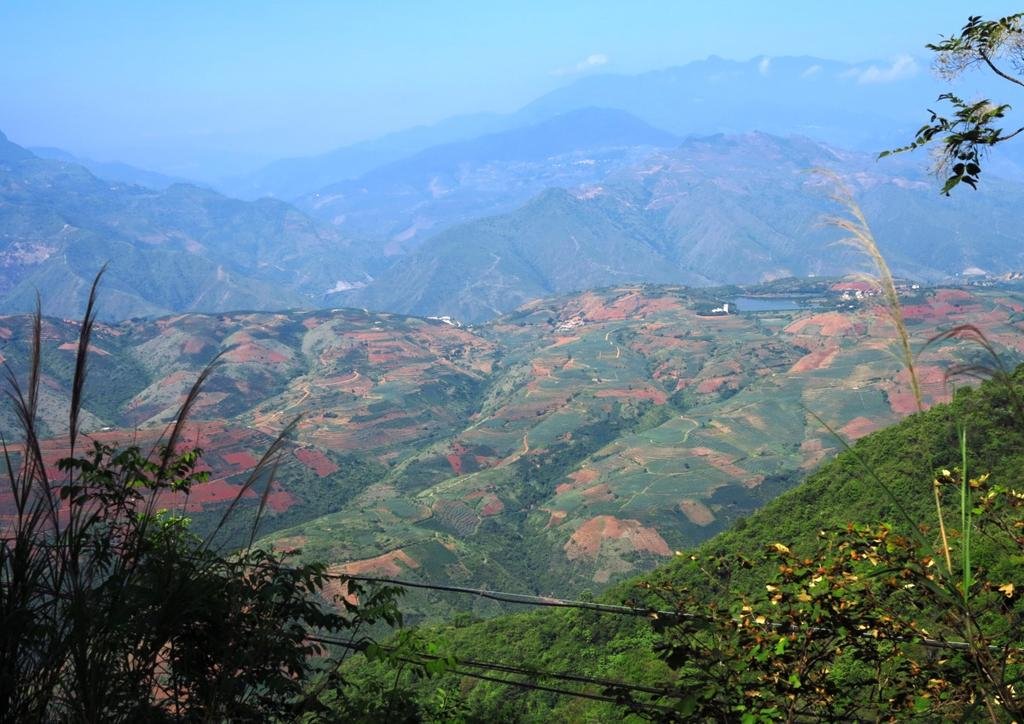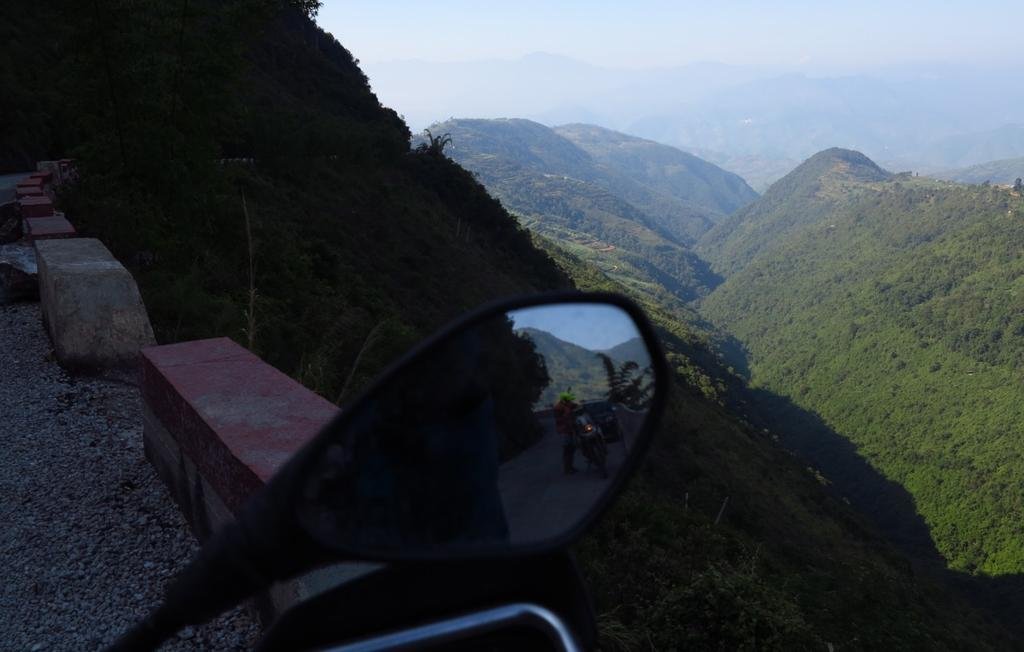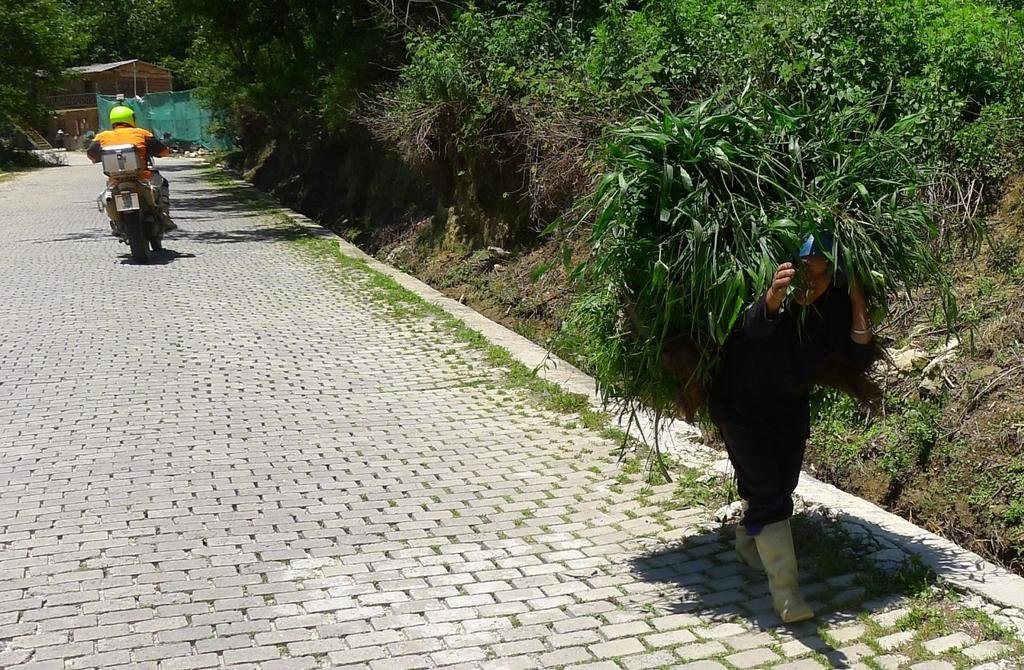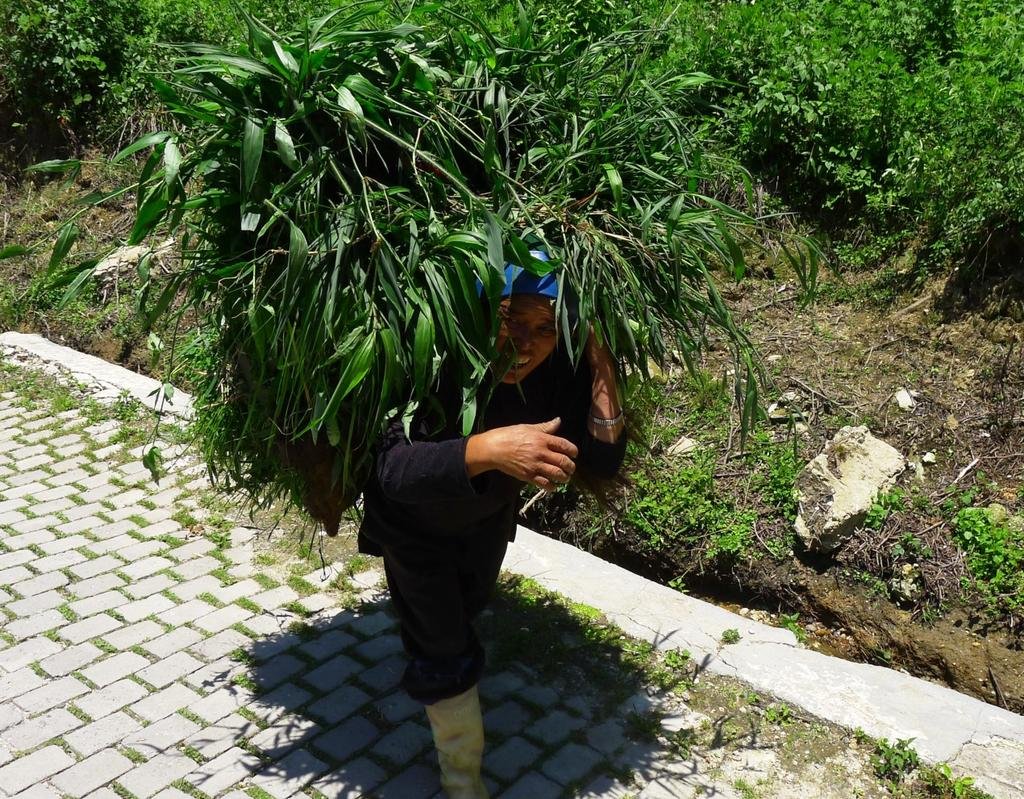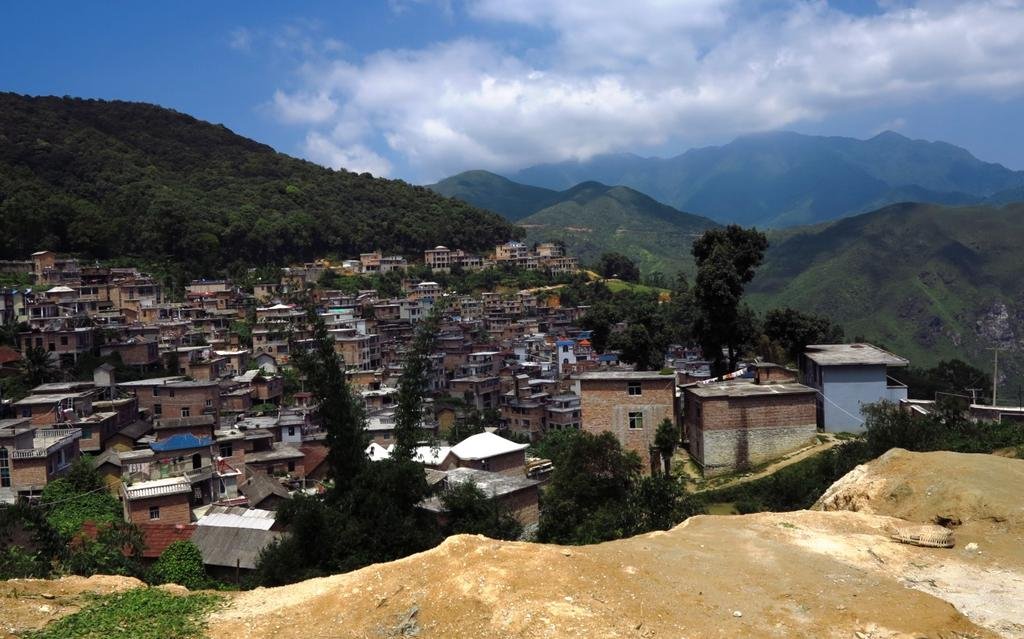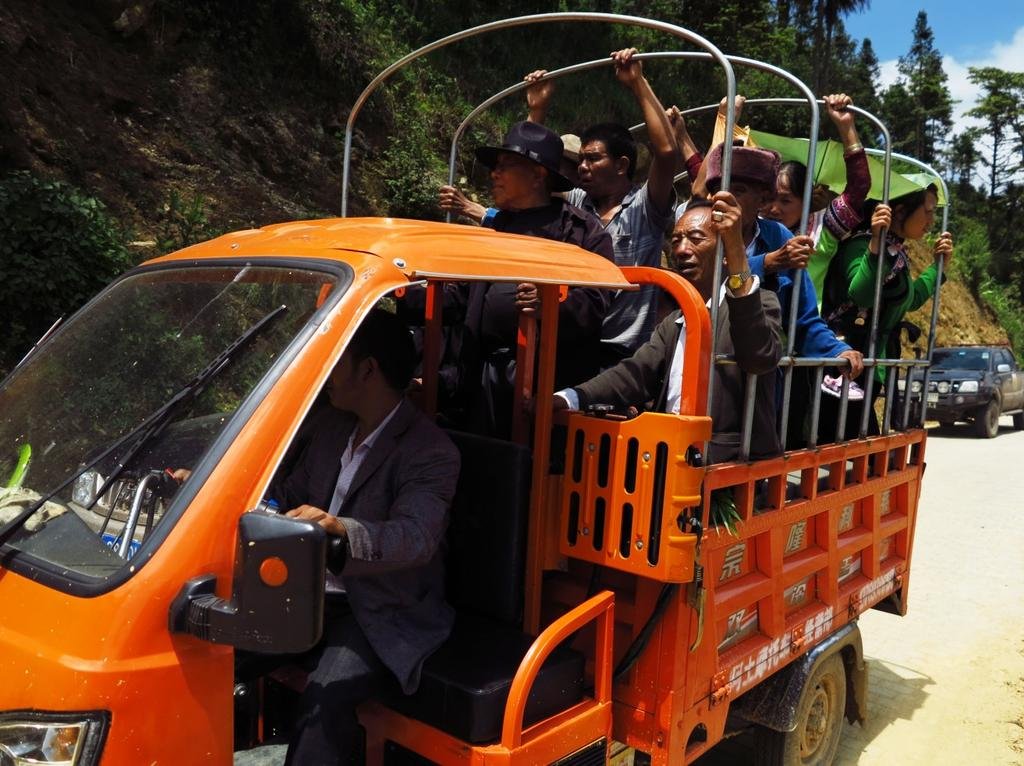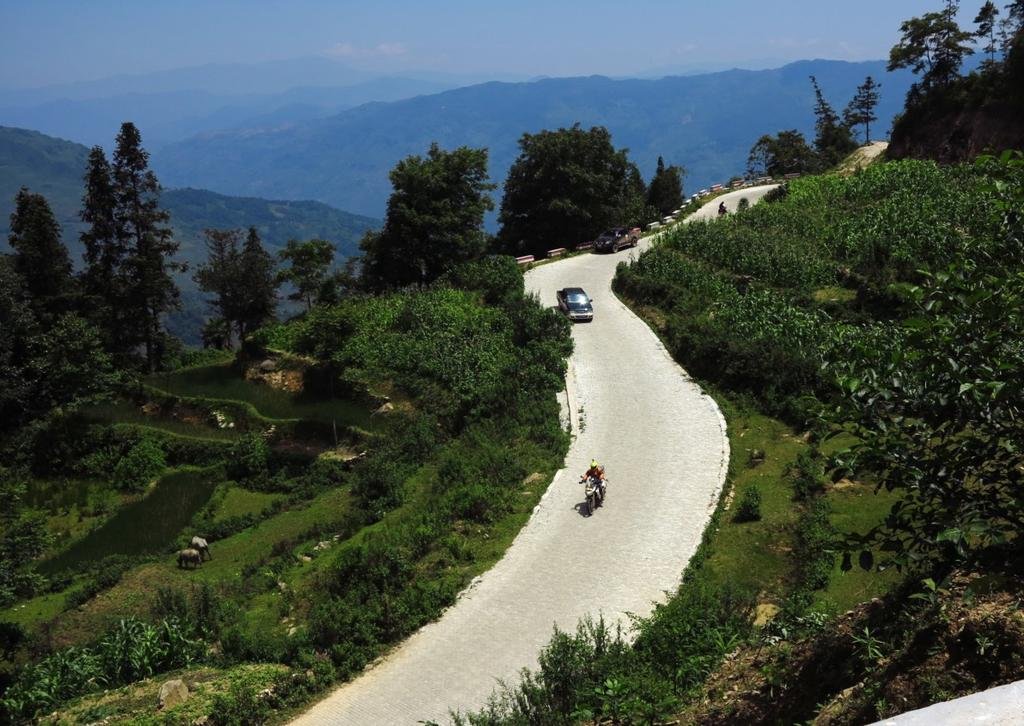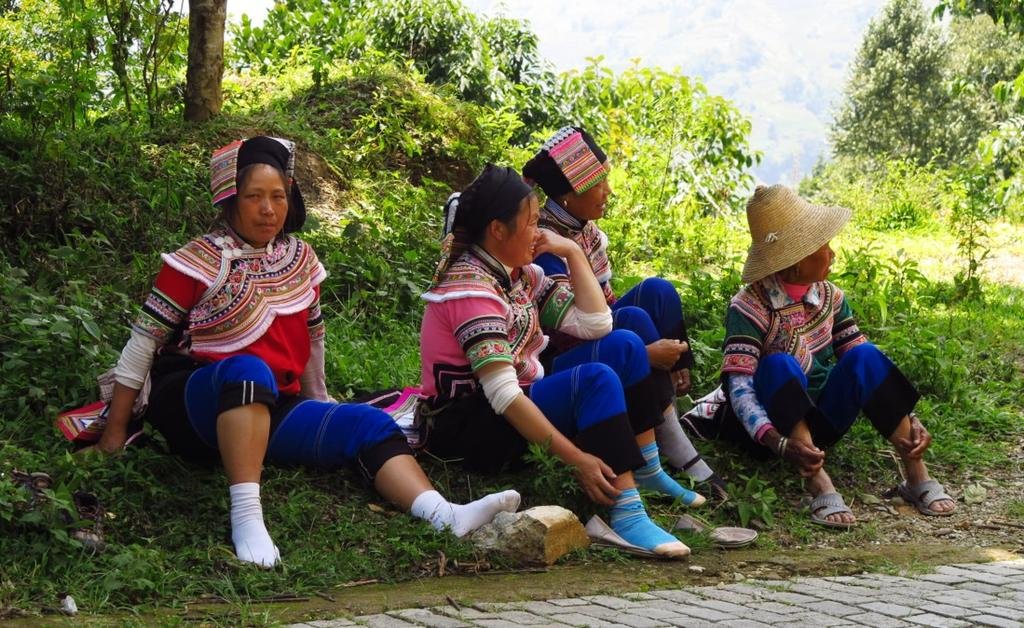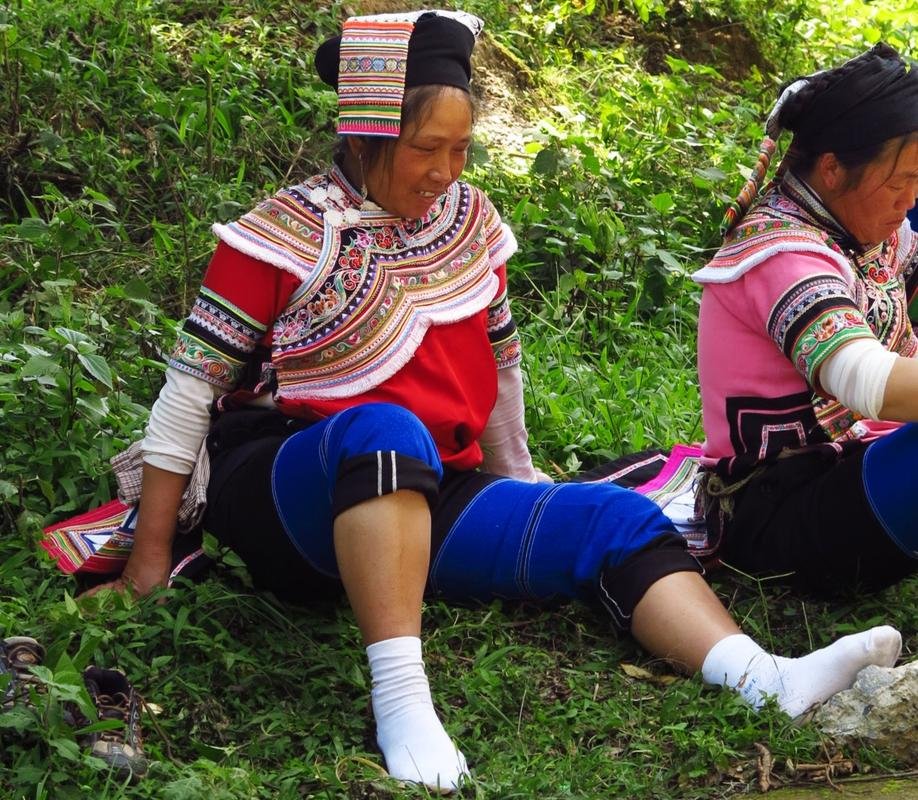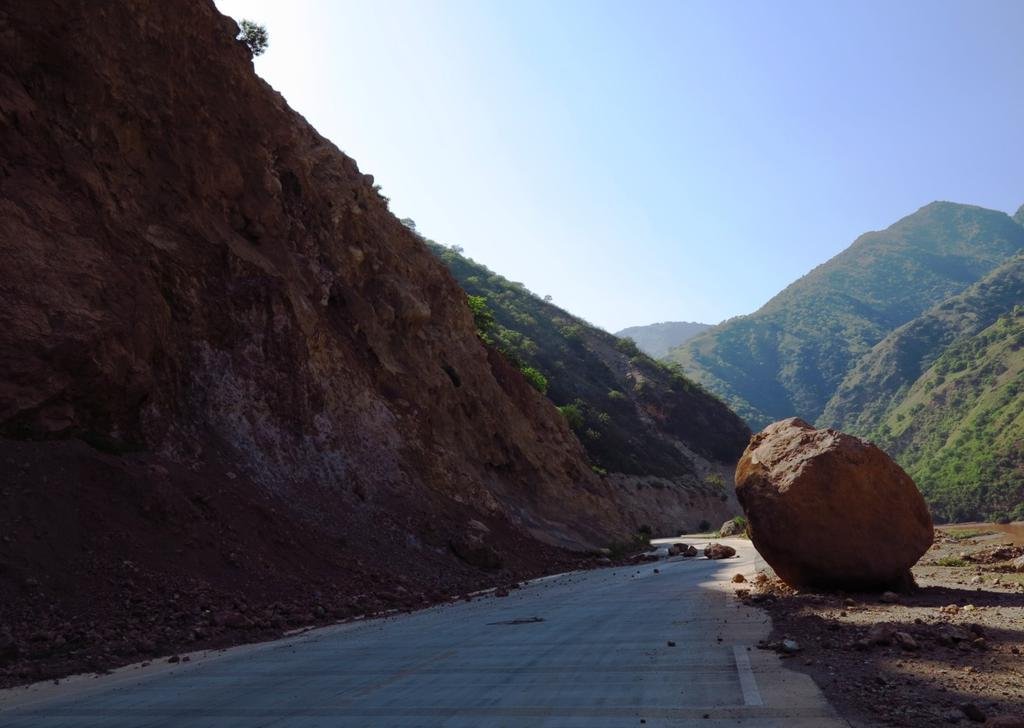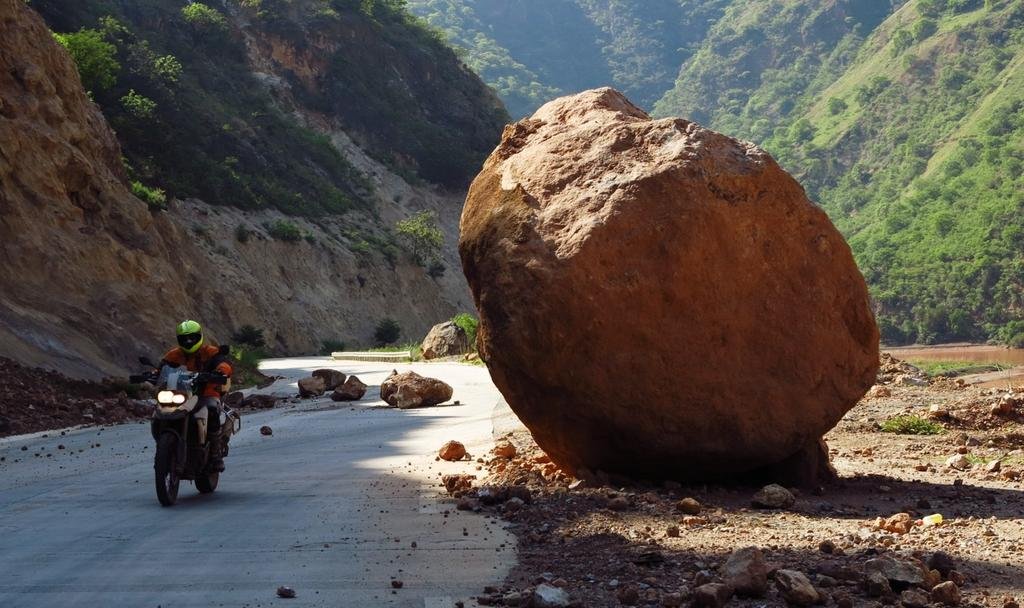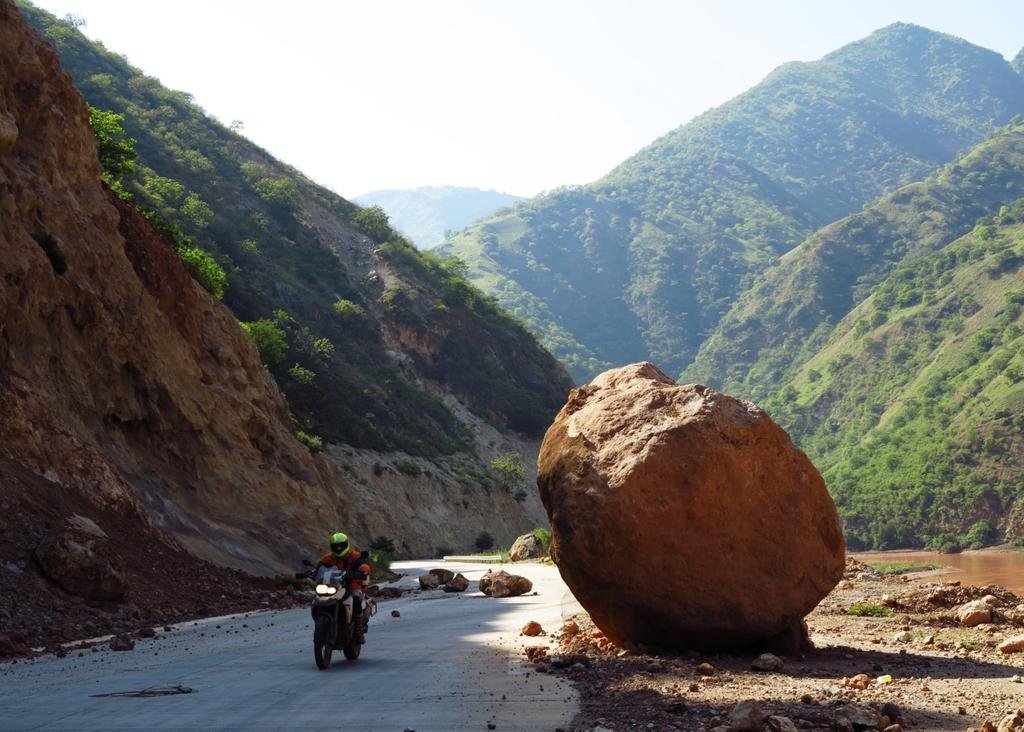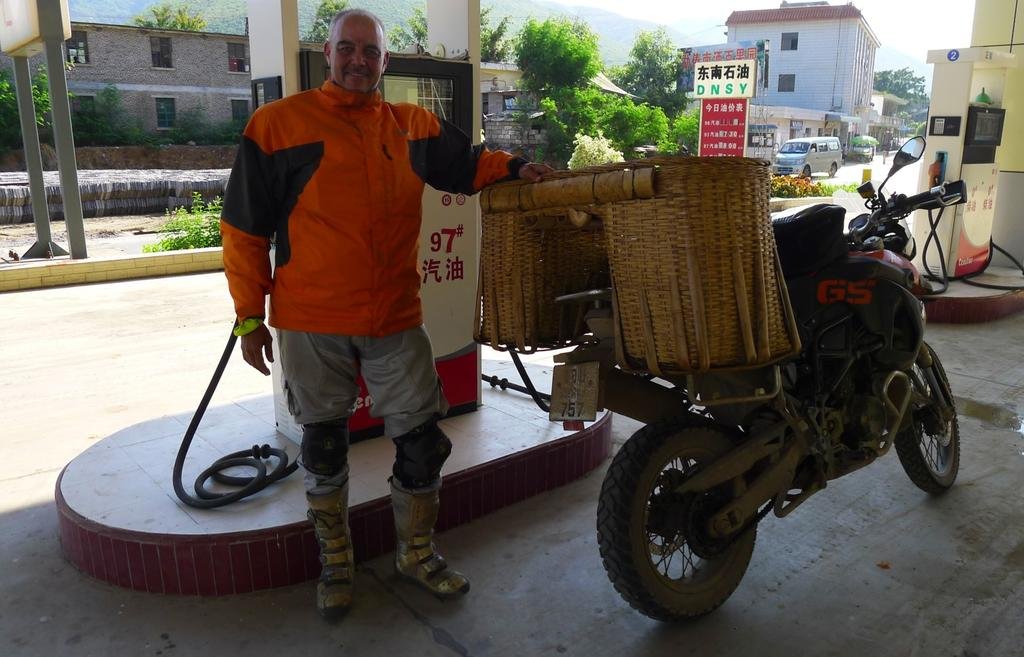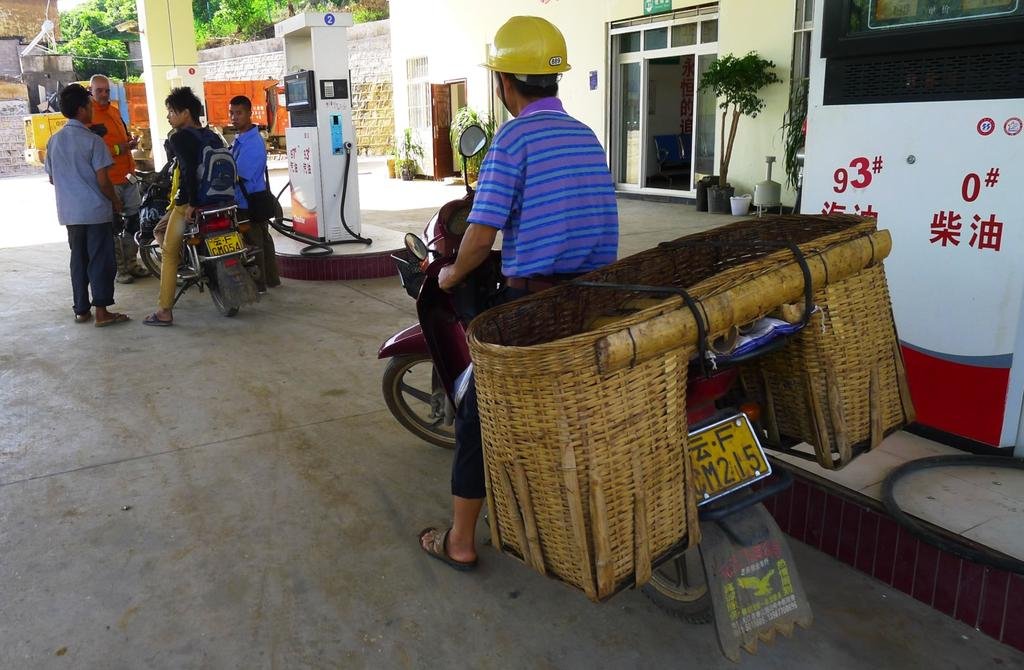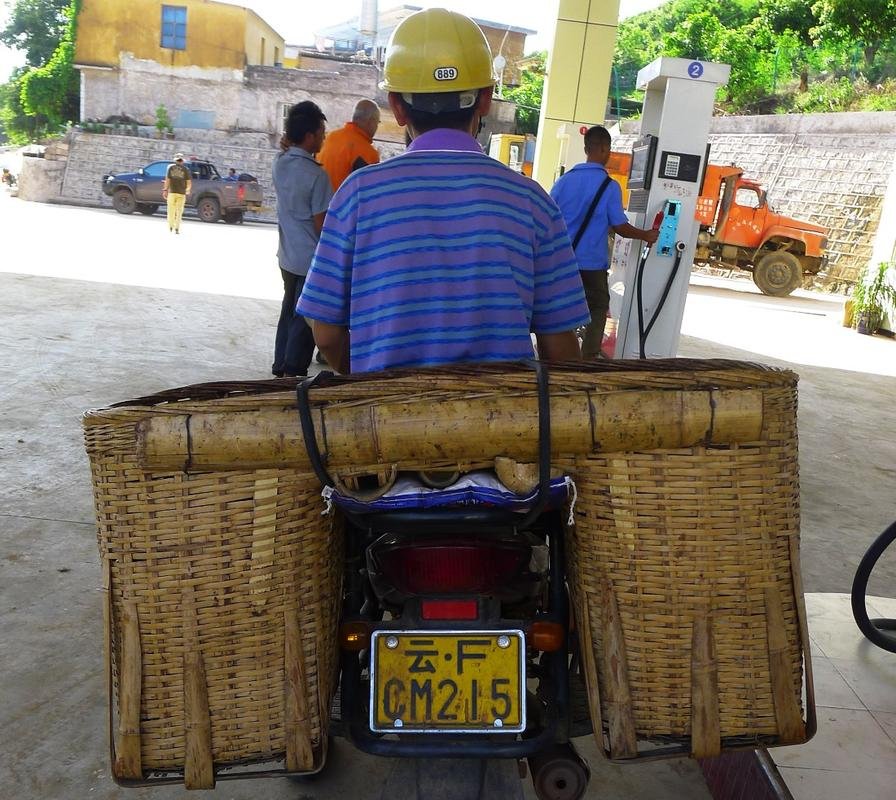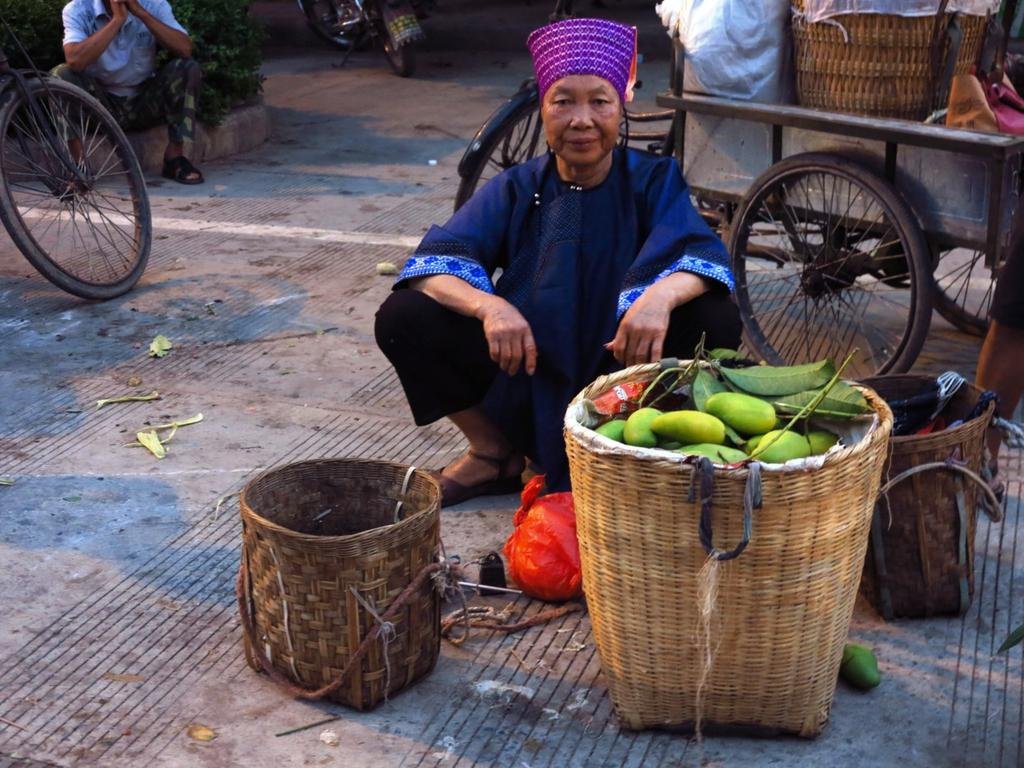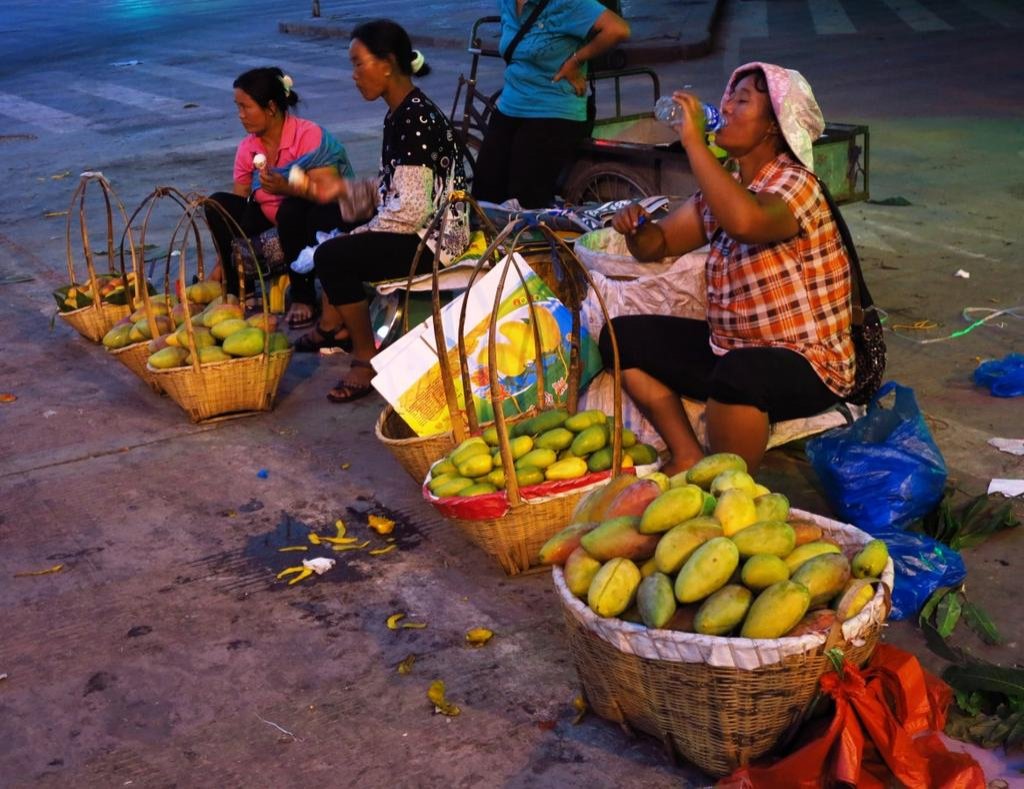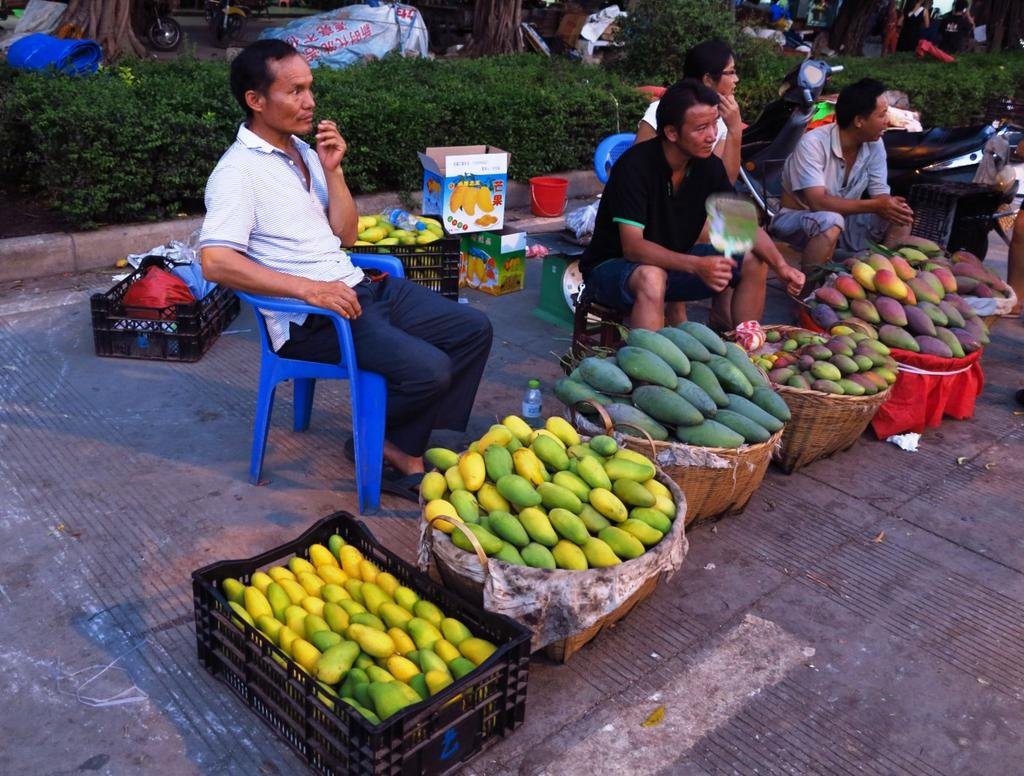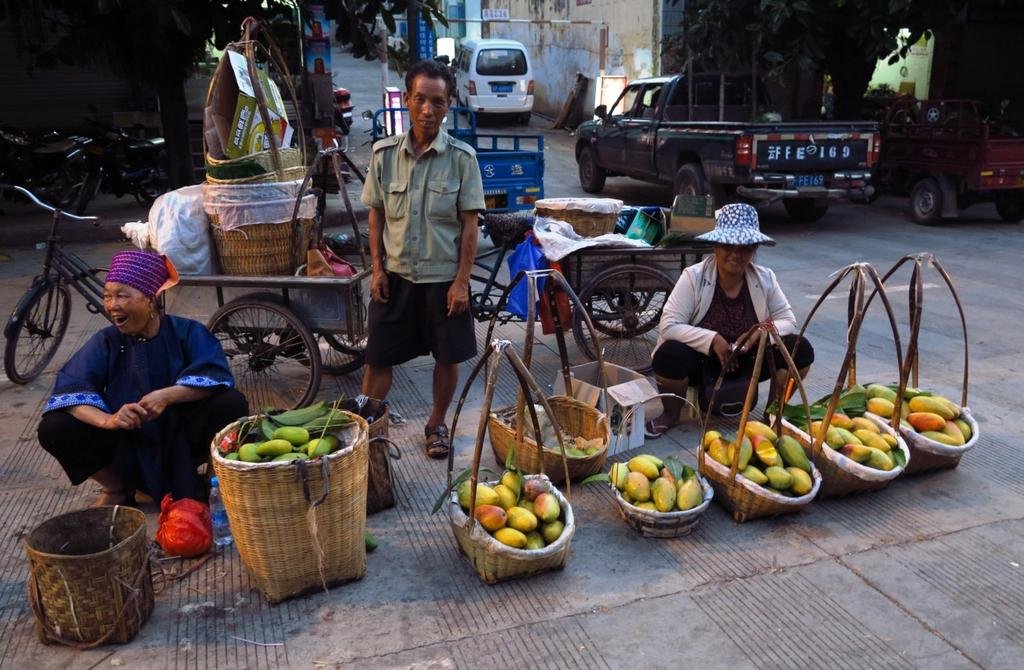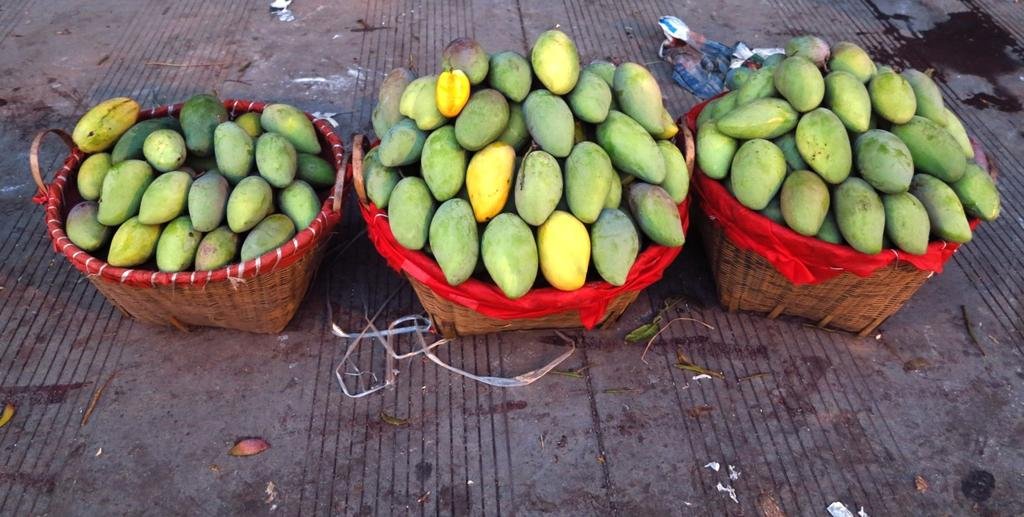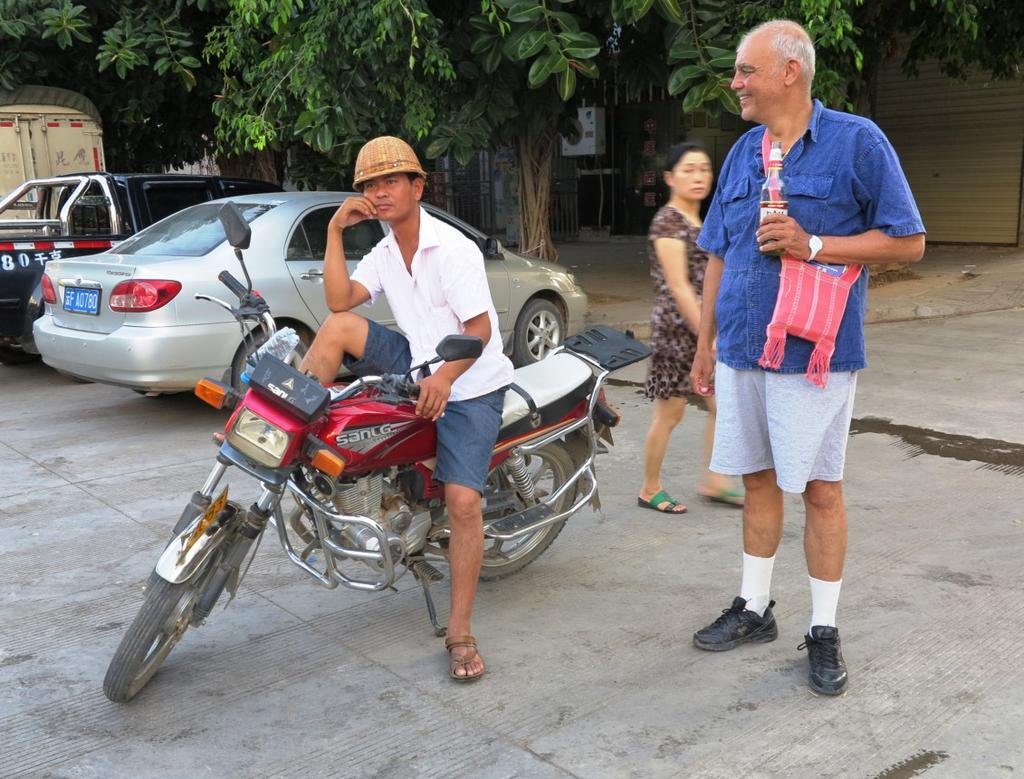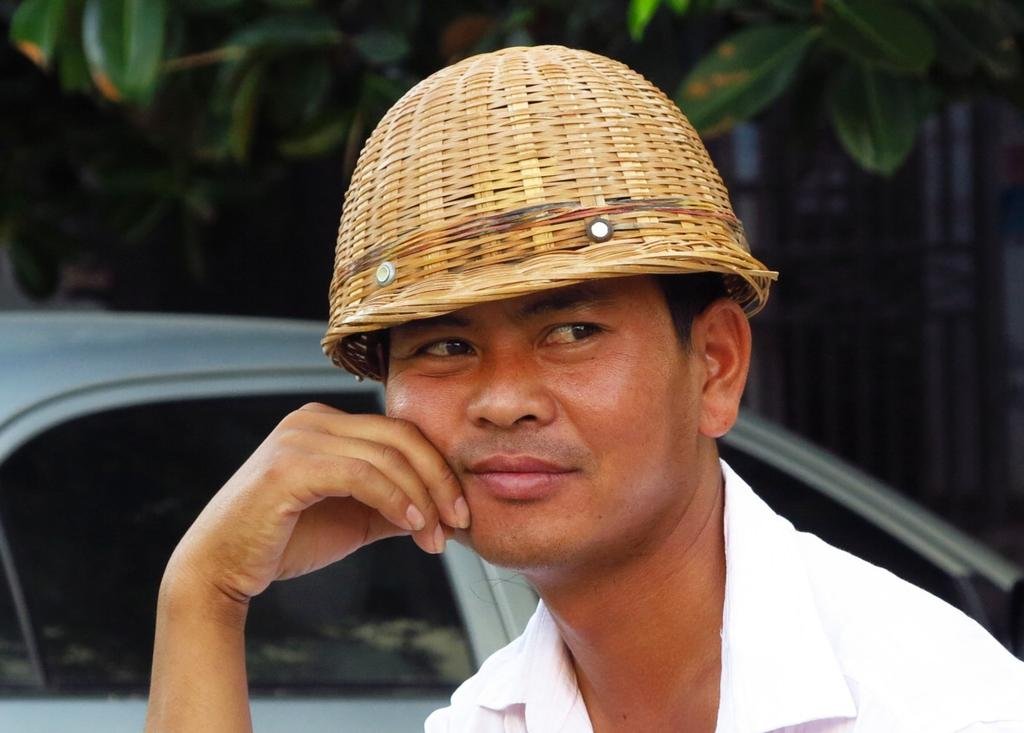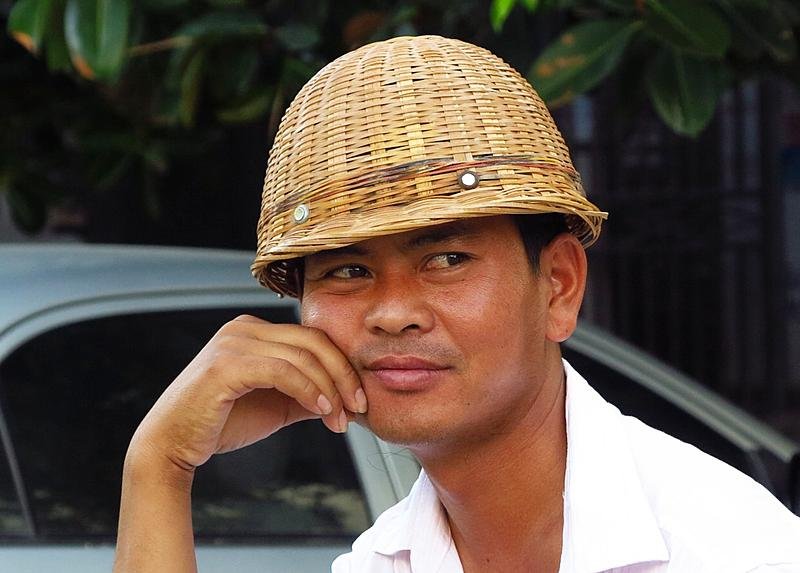You are using an out of date browser. It may not display this or other websites correctly.
You should upgrade or use an alternative browser.
You should upgrade or use an alternative browser.
Recky tour - Chiang Mai to the Tibet border / Kawa Karpo at 6,740 meters (22,113')
- Thread starter KTMphil
- Start date
KTMphil
Senior member
KTMphil
Senior member
KTMphil
Senior member
Early morning wood carriers
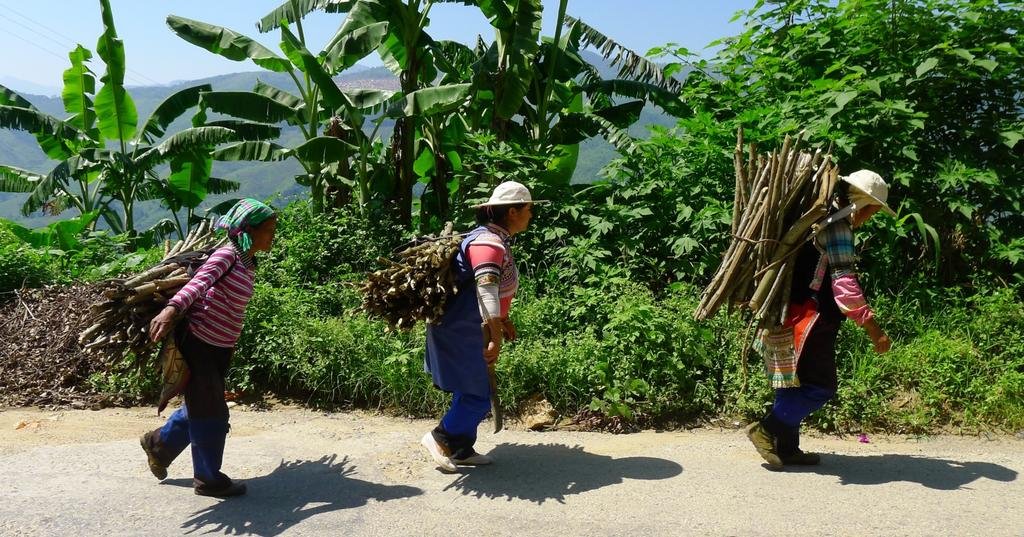
& old ladies off to the fields
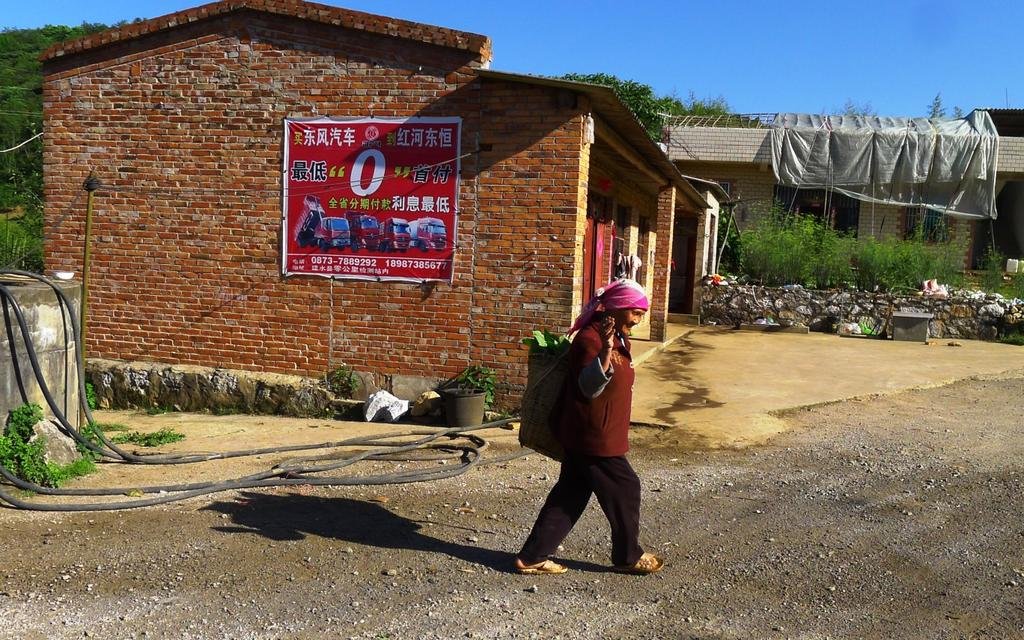
These ladies would probably been from the Yi tribe, they tend to wear lighter colored traditional dress than the Hani tribe in China
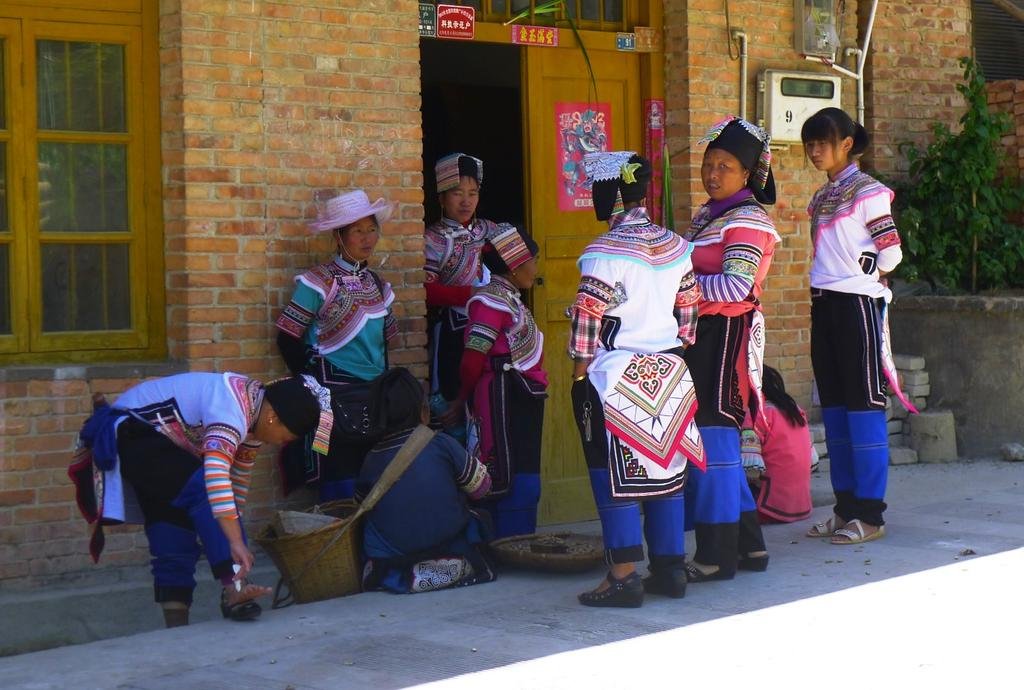
From Wiki Yi people - Wikipedia, the free encyclopedia
The Yi or Lolo people[SUP][3][/SUP] are an ethnic group in China, Vietnam, and Thailand. Numbering 8 million, they are the seventh largest of the 55 ethnic minority groups officially recognized by the People's Republic of China. They live primarily in rural areas of Sichuan, Yunnan, Guizhou, and Guangxi, usually in mountainous regions. As of 1999, there were 3,300 "Lô Lô" people living in Hà Giang, Cao Bằng, and Lào Cai provinces in northeastern Vietnam. Most Yi are farmers; herders of cattle, sheep and goats; and nomadic hunters.[SUP][citation needed][/SUP]
The Yi speak various Loloish languages, Tibeto-Burman languages closely related to Burmese. The prestige variety is Nuosu, which is written in the Yi script.
Of the more than 8 million Yi people, over 4.5 million live in Yunnan Province, 2.5 million live in southern Sichuan Province, and 1 million live in the northwest corner of Guizhou Province. Nearly all the Yi live in mountainous areas,[SUP][citation needed][/SUP] often carving out their existence on the sides of steep mountain slopes far from the cities of China.
The altitudinal differences of the Yi areas directly affect the climate and precipitation of these areas. These striking differences are the basis of the old saying that "The weather is different a few miles away" in the Yi area. This is the primary reason why the Yi in various areas are so different from one another in the ways they make a living.[SUP][4]
[/SUP]

& old ladies off to the fields

These ladies would probably been from the Yi tribe, they tend to wear lighter colored traditional dress than the Hani tribe in China

From Wiki Yi people - Wikipedia, the free encyclopedia
The Yi or Lolo people[SUP][3][/SUP] are an ethnic group in China, Vietnam, and Thailand. Numbering 8 million, they are the seventh largest of the 55 ethnic minority groups officially recognized by the People's Republic of China. They live primarily in rural areas of Sichuan, Yunnan, Guizhou, and Guangxi, usually in mountainous regions. As of 1999, there were 3,300 "Lô Lô" people living in Hà Giang, Cao Bằng, and Lào Cai provinces in northeastern Vietnam. Most Yi are farmers; herders of cattle, sheep and goats; and nomadic hunters.[SUP][citation needed][/SUP]
The Yi speak various Loloish languages, Tibeto-Burman languages closely related to Burmese. The prestige variety is Nuosu, which is written in the Yi script.
Of the more than 8 million Yi people, over 4.5 million live in Yunnan Province, 2.5 million live in southern Sichuan Province, and 1 million live in the northwest corner of Guizhou Province. Nearly all the Yi live in mountainous areas,[SUP][citation needed][/SUP] often carving out their existence on the sides of steep mountain slopes far from the cities of China.
The altitudinal differences of the Yi areas directly affect the climate and precipitation of these areas. These striking differences are the basis of the old saying that "The weather is different a few miles away" in the Yi area. This is the primary reason why the Yi in various areas are so different from one another in the ways they make a living.[SUP][4]
[/SUP]
KTMphil
Senior member
KTMphil
Senior member
As we ride further south, we intersect with the "Red River" . This river eventually meets the ocean in the Gulf of Tonkin, Vietnam.
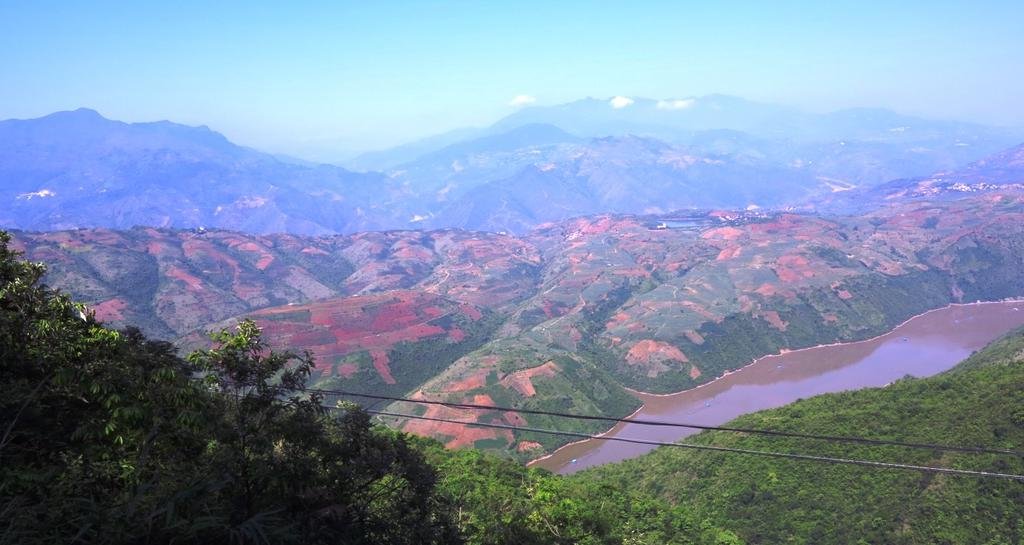
From Wiki re the Red River in Yunnan province, China Red River (Asia) - Wikipedia, the free encyclopedia
The Red River begins in China's Yunnan province in the mountains south of Dali. It flows generally southeastward, passing through Dai ethnic minority areas before leaving China through Yunnan's Honghe Autonomous Prefecture. It enters Vietnam at Lào Cai Province. It forms a portion of the international border between China and Vietnam. The river, known as Thao River for this upper stretch, continues its southeasterly course through northwestern Vietnam before emerging from the mountains to reach the midlands. Its main tributaries, the Da River and Lo River join in to form the very broad Hong near Viet Tri. Downstream from Viet Tri, the river and its many distributaries spread out to form the Red River Delta. The Red River flows past the Vietnamese capital Hanoi before emptying into the Gulf of Tonkin.
Tonkin is the former name of the northern provinces of Vietnam and thus the eponymous body of water receiving the main river of "Tonkin".
The reddish-brown heavily silt-laden water gives the river its name. The Red River is notorious for its violent floods with its seasonally wide volume fluctuations. The delta is a major agricultural area of Vietnam with vast area devoted to rice. The land is protected by an elaborate network of dikes and levees.
The Black River and Lô River are the Red River's two chief tributaries.
In the 19th century, the Red River was thought to be a lucrative trade route to China. The late 19th-century French explorers were able to travel up the Red River until Manhao in South Yunnan, and then overland toward Kunming.[SUP][1][/SUP] It was the forced opening of the Red River to European commerce that prompted the 1883–1886 wars between France and the Vietnamese court, culminating in the conquest of Vietnam.
The Red River remained the main commercial travel route between the French Indochina and Yunnan until the opening of the Kunming–Hai Phong Railway in 1910. Thanks to the river, Hai Phong was in the early 20th century the sea port most easily accessible from Kunming. Still, the travel time between Hai Phong and Kunming was reckoned by the Western authorities at 28 days: it involved 16 days of travel by steamer and then a small boat up the Red River to Manhao (425 miles), and then 12 days overland (194 miles) to Kunming.[SUP][2]
[/SUP]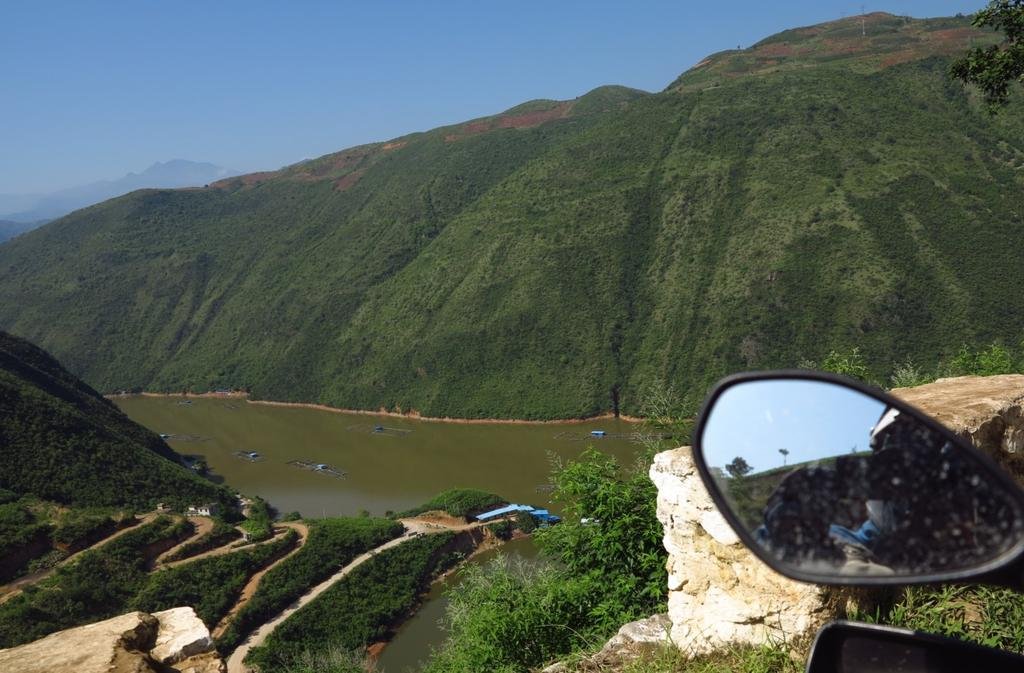 [SUP]
[SUP]
[/SUP]

From Wiki re the Red River in Yunnan province, China Red River (Asia) - Wikipedia, the free encyclopedia
The Red River begins in China's Yunnan province in the mountains south of Dali. It flows generally southeastward, passing through Dai ethnic minority areas before leaving China through Yunnan's Honghe Autonomous Prefecture. It enters Vietnam at Lào Cai Province. It forms a portion of the international border between China and Vietnam. The river, known as Thao River for this upper stretch, continues its southeasterly course through northwestern Vietnam before emerging from the mountains to reach the midlands. Its main tributaries, the Da River and Lo River join in to form the very broad Hong near Viet Tri. Downstream from Viet Tri, the river and its many distributaries spread out to form the Red River Delta. The Red River flows past the Vietnamese capital Hanoi before emptying into the Gulf of Tonkin.
Tonkin is the former name of the northern provinces of Vietnam and thus the eponymous body of water receiving the main river of "Tonkin".
The reddish-brown heavily silt-laden water gives the river its name. The Red River is notorious for its violent floods with its seasonally wide volume fluctuations. The delta is a major agricultural area of Vietnam with vast area devoted to rice. The land is protected by an elaborate network of dikes and levees.
The Black River and Lô River are the Red River's two chief tributaries.
In the 19th century, the Red River was thought to be a lucrative trade route to China. The late 19th-century French explorers were able to travel up the Red River until Manhao in South Yunnan, and then overland toward Kunming.[SUP][1][/SUP] It was the forced opening of the Red River to European commerce that prompted the 1883–1886 wars between France and the Vietnamese court, culminating in the conquest of Vietnam.
The Red River remained the main commercial travel route between the French Indochina and Yunnan until the opening of the Kunming–Hai Phong Railway in 1910. Thanks to the river, Hai Phong was in the early 20th century the sea port most easily accessible from Kunming. Still, the travel time between Hai Phong and Kunming was reckoned by the Western authorities at 28 days: it involved 16 days of travel by steamer and then a small boat up the Red River to Manhao (425 miles), and then 12 days overland (194 miles) to Kunming.[SUP][2]
[/SUP]
 [SUP]
[SUP][/SUP]
KTMphil
Senior member
There were some sexy roads ahead of us & hardly any traffic
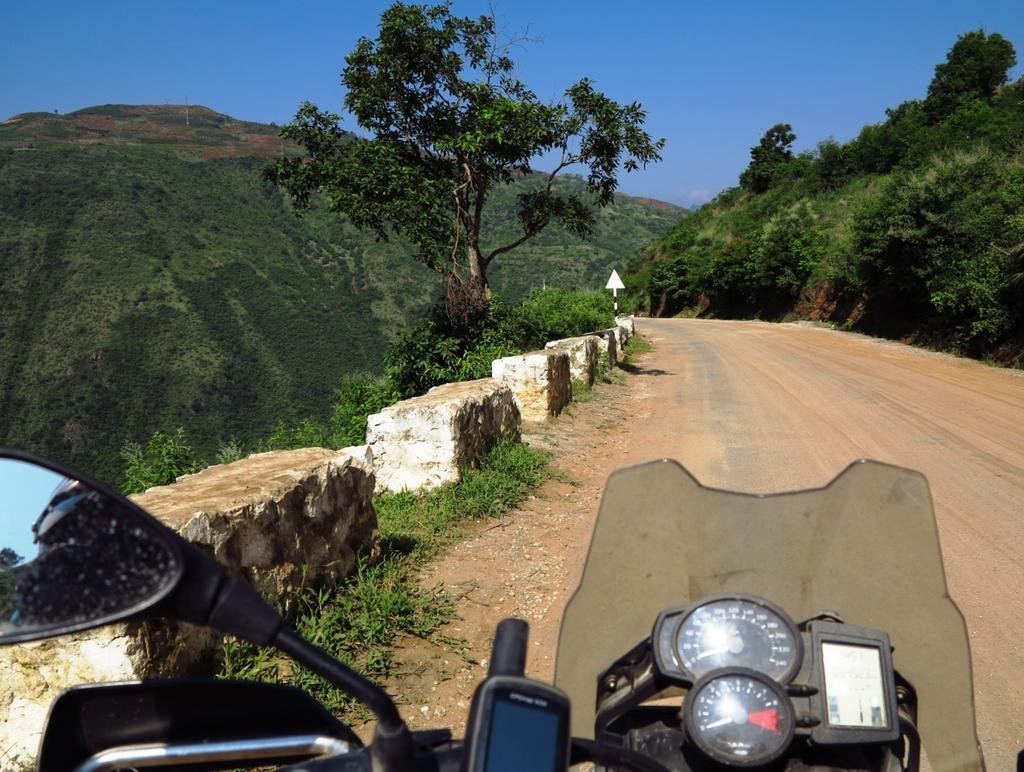
Mr R getting some Kodak moments
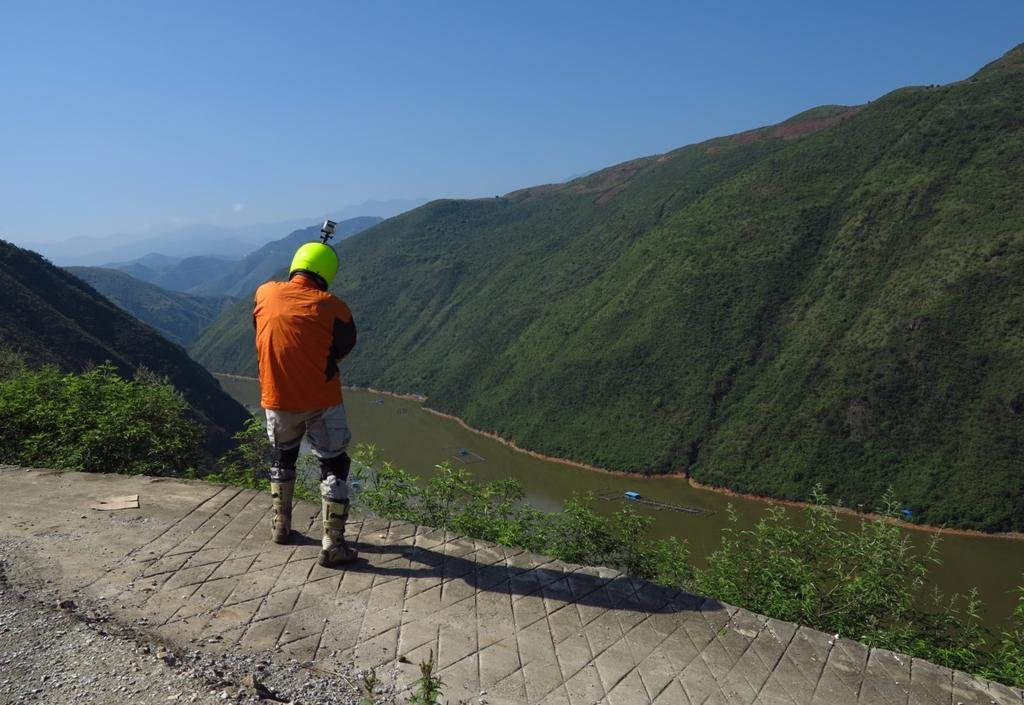
Below we're approaching the old city of Yuan Yang which is the gateway to the terraced rice fields
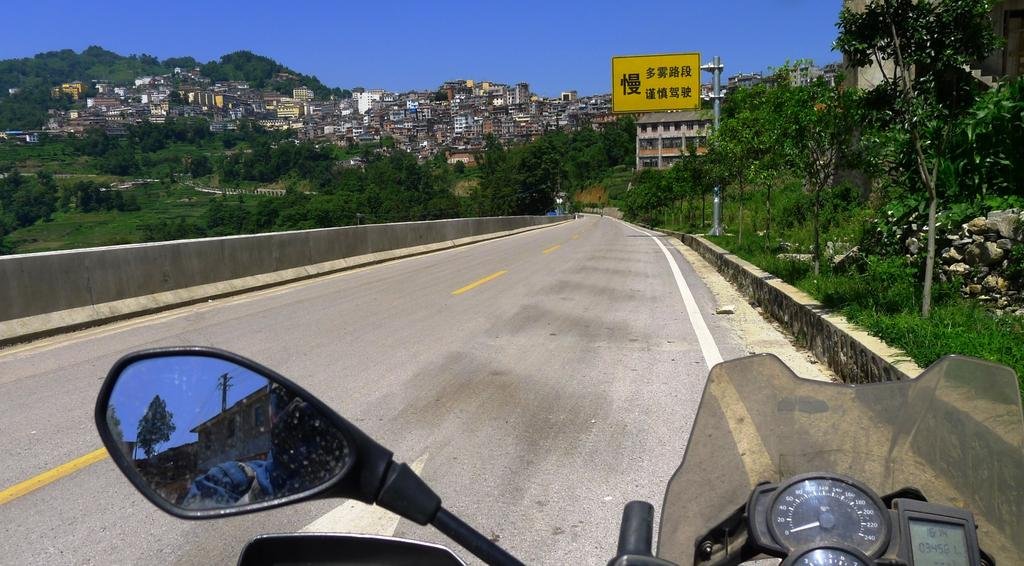
Through the old town of Yuan Yang and arriving at the terraced rice fields. They have the nerve to charge you 100 Yuan (USD$ 15) to pass through on this public road!
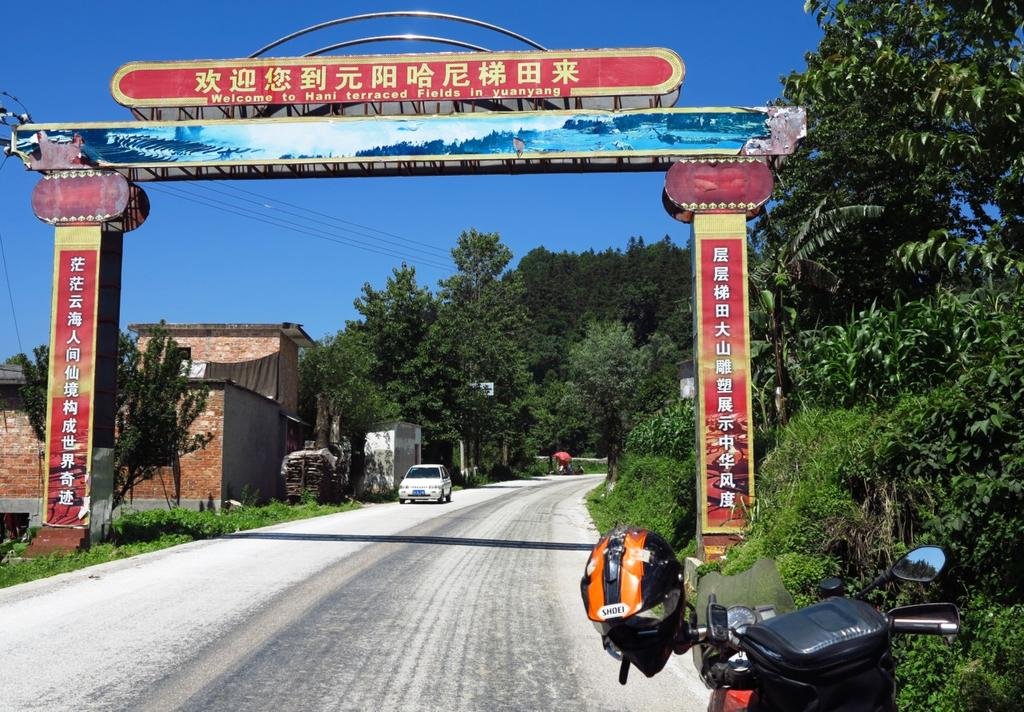
Yuanyang Rice Terraces - source: Yuanyang Rice Terraces, Honghe, Yunnan
Yuanyang Rice Terraces, located on the southern slopes of Ailao Mountain in Yuanyang County (part of Honghe Hani Autonomous Prefecture) and located in the south of Yunnan Province has been a masterpiece of the ingenuity of the Hani people for generations. Southern Ailao Mountain, with this typical tiered landscape, is famed for its unique frontier scenery.
The Hani people's ancestors came to this steep mountain area 2,500 years ago. In their struggle against the difficult terrain they successfully established the terraces, where they grew rice in order to make a living. The technology of developing fertile land on rugged mountain slopes didn't spread all over China and Southeast Asia until 14th century. The creativity of the Hani people turned this mountain area into one of artistic beauty. In recognition, the Ming Dynasty emperor granted the title of 'Skillful Sculptor' to Hani people and their good reputation was passed down from generation to generation. At present, known as 'land sculpture' the terraced fields have been being officially acknowledged by UNESCO as a World Cultural and Natural Heritage site.

Mr R getting some Kodak moments

Below we're approaching the old city of Yuan Yang which is the gateway to the terraced rice fields

Through the old town of Yuan Yang and arriving at the terraced rice fields. They have the nerve to charge you 100 Yuan (USD$ 15) to pass through on this public road!

Yuanyang Rice Terraces - source: Yuanyang Rice Terraces, Honghe, Yunnan
Yuanyang Rice Terraces, located on the southern slopes of Ailao Mountain in Yuanyang County (part of Honghe Hani Autonomous Prefecture) and located in the south of Yunnan Province has been a masterpiece of the ingenuity of the Hani people for generations. Southern Ailao Mountain, with this typical tiered landscape, is famed for its unique frontier scenery.
The Hani people's ancestors came to this steep mountain area 2,500 years ago. In their struggle against the difficult terrain they successfully established the terraces, where they grew rice in order to make a living. The technology of developing fertile land on rugged mountain slopes didn't spread all over China and Southeast Asia until 14th century. The creativity of the Hani people turned this mountain area into one of artistic beauty. In recognition, the Ming Dynasty emperor granted the title of 'Skillful Sculptor' to Hani people and their good reputation was passed down from generation to generation. At present, known as 'land sculpture' the terraced fields have been being officially acknowledged by UNESCO as a World Cultural and Natural Heritage site.
KTMphil
Senior member
It is pretty dam spectacular when you get in there
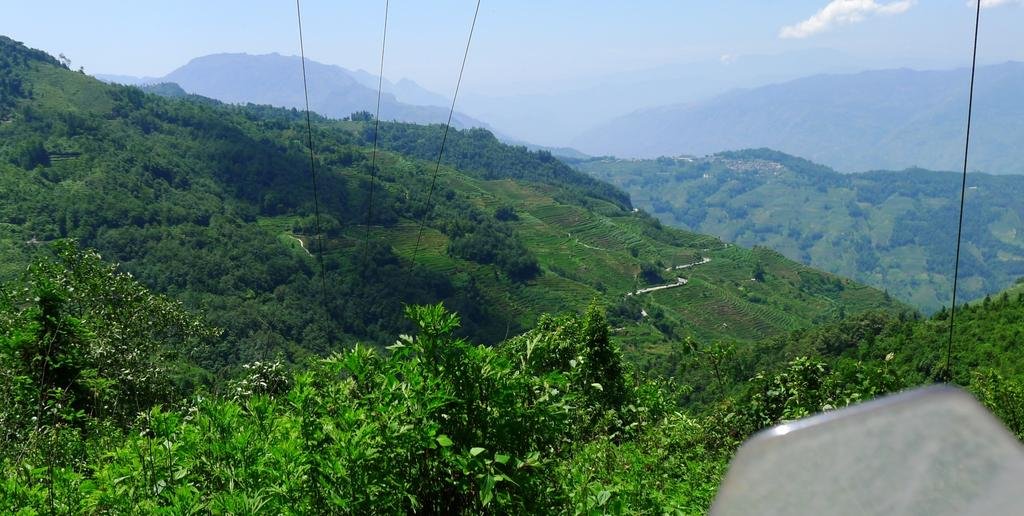
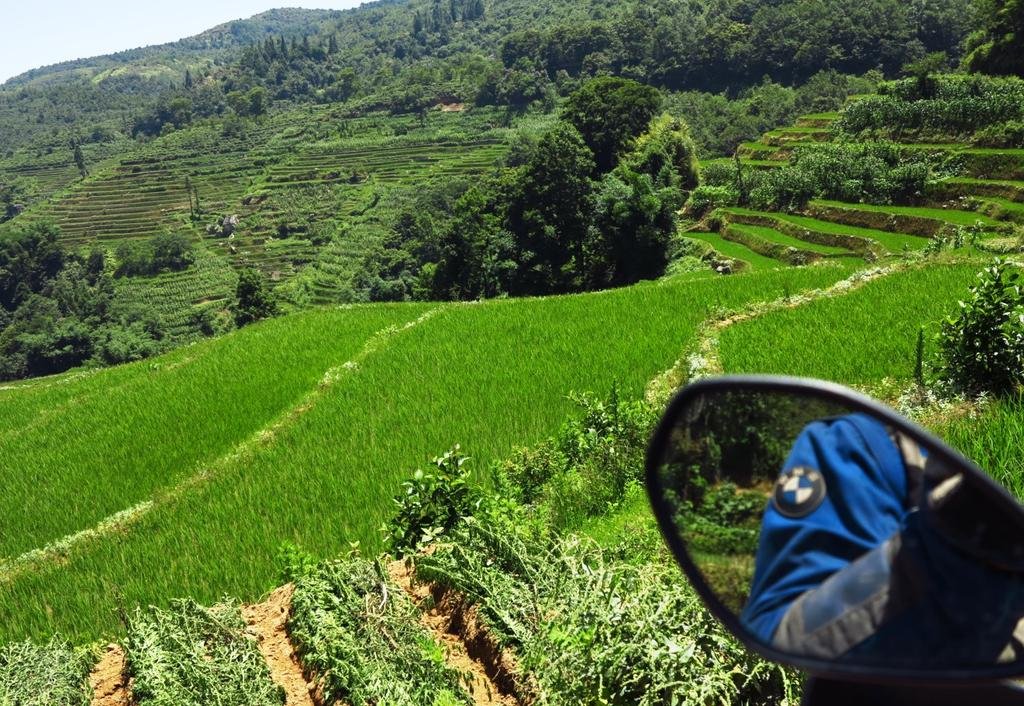
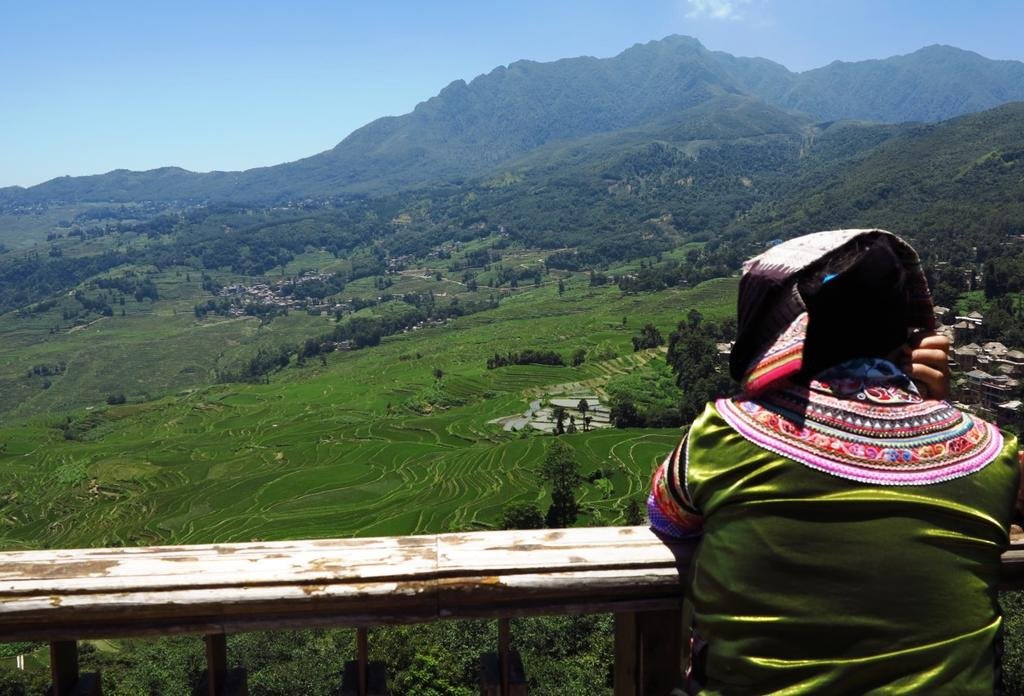
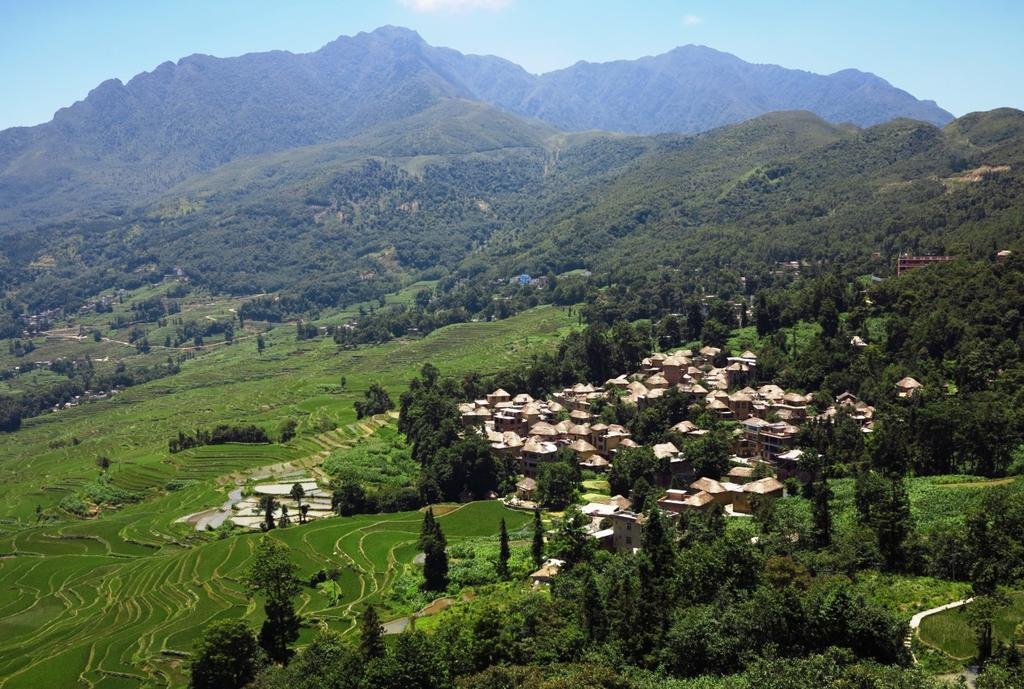
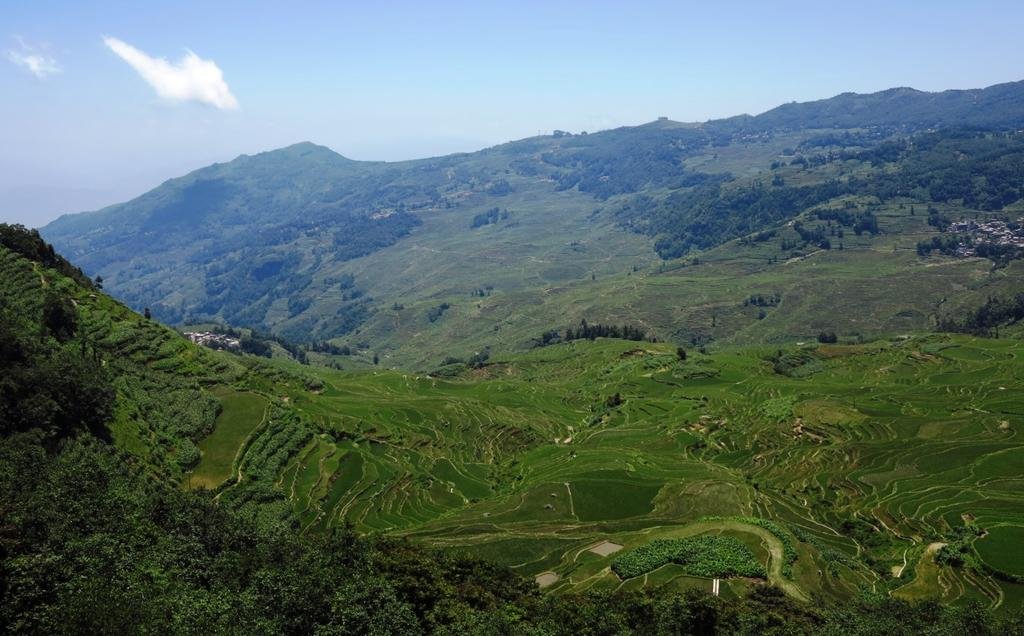
Around December is supposed to be the best time to come as the rice terraces are then all filled with water and the reflections from the sky in the water is out of this world for photographs
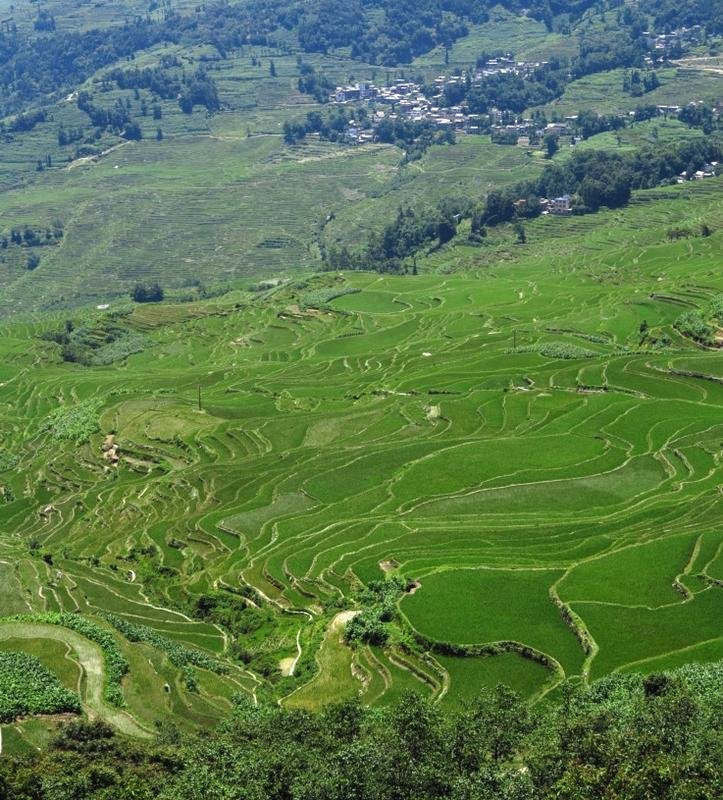
Traditional style housing around the rice terraces
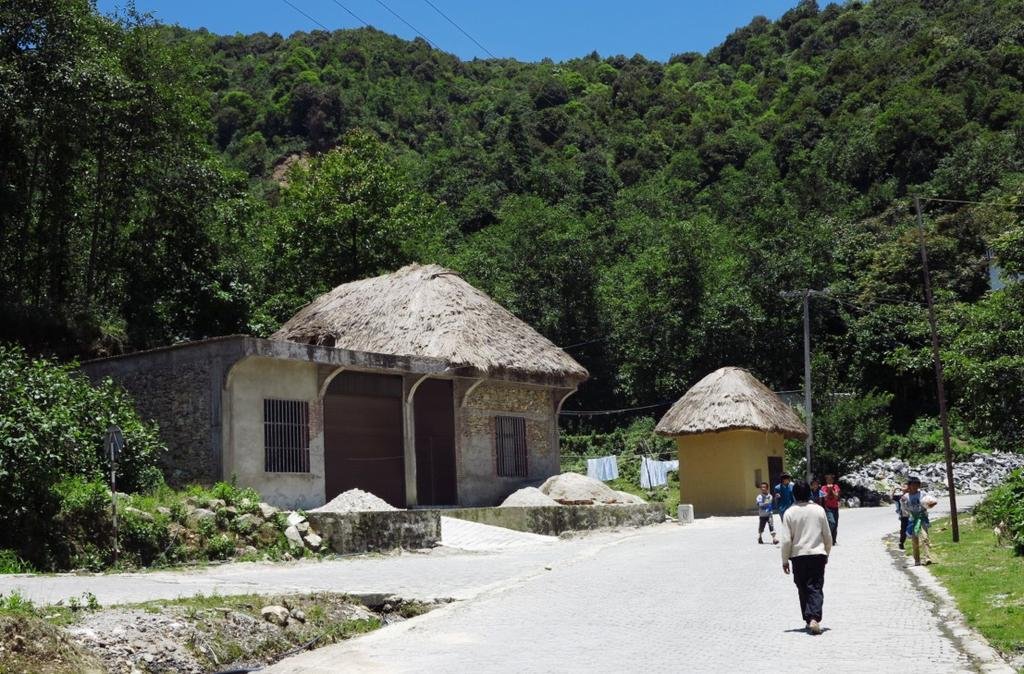
We had lunch at this authentic looking restaurant
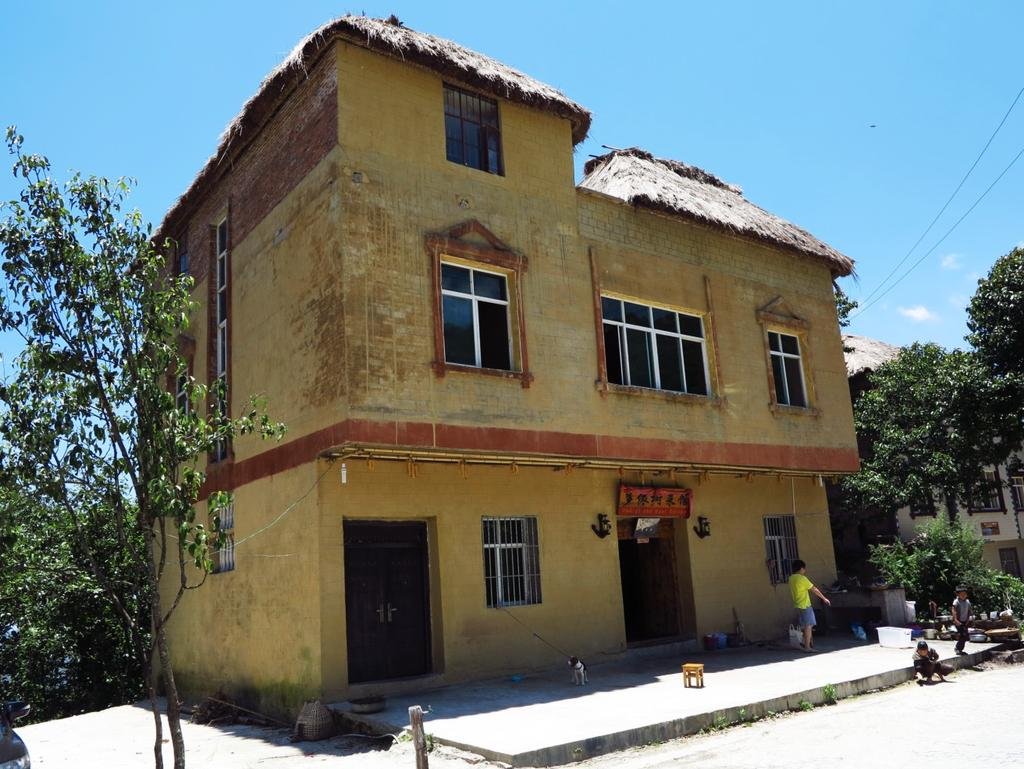
Yi & Hani tribal costumes on the wall
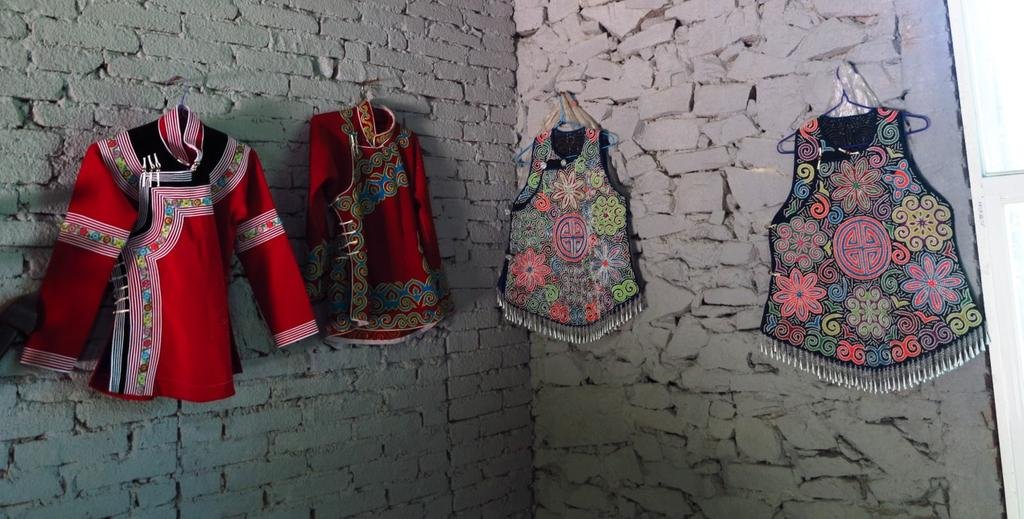
Interesting to see how they stored the duck eggs
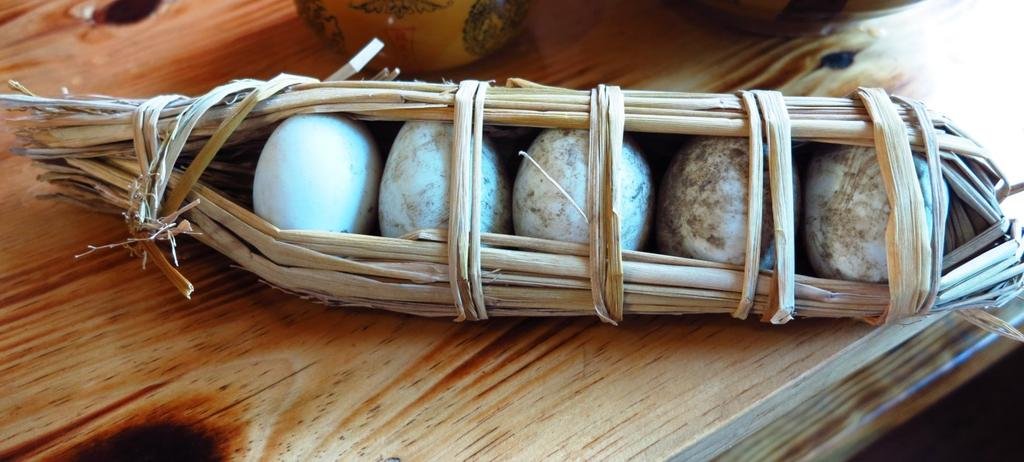





Around December is supposed to be the best time to come as the rice terraces are then all filled with water and the reflections from the sky in the water is out of this world for photographs

Traditional style housing around the rice terraces

We had lunch at this authentic looking restaurant

Yi & Hani tribal costumes on the wall

Interesting to see how they stored the duck eggs

KTMphil
Senior member
After lunch and back on the racetrack road through the rice terraces, Mr R below enjoying the curves
View attachment 18116
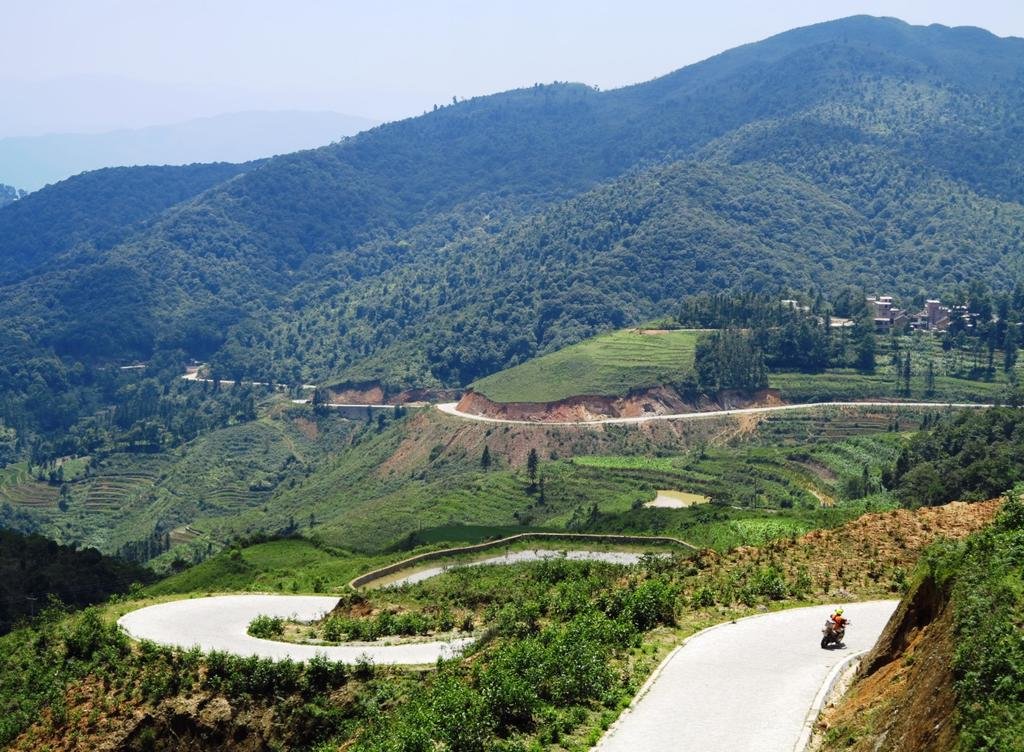
View attachment 18118
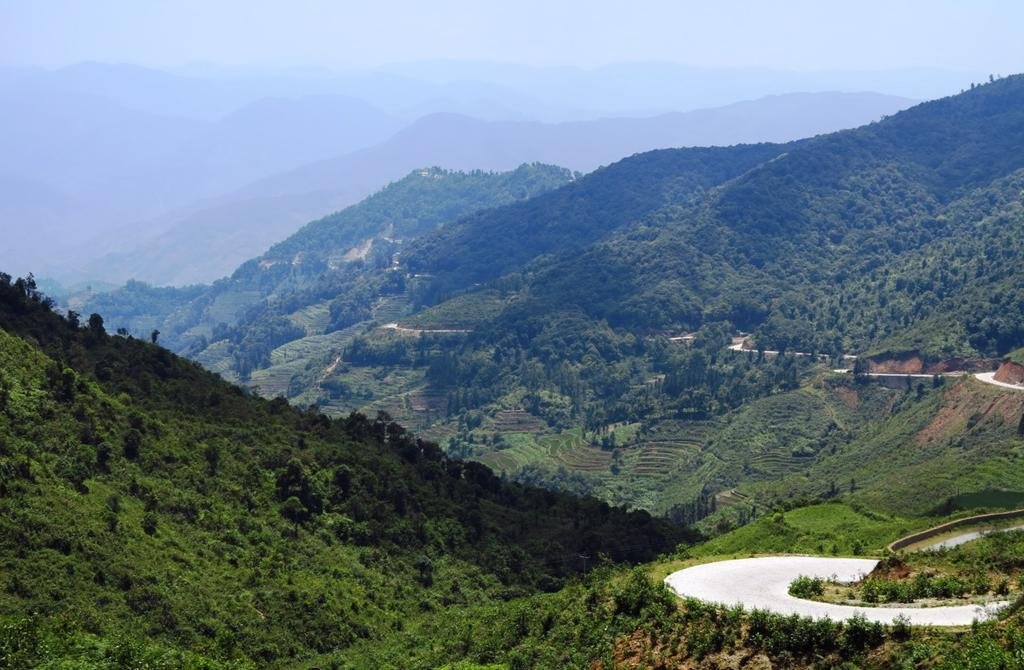
The fun ahead
View attachment 18117
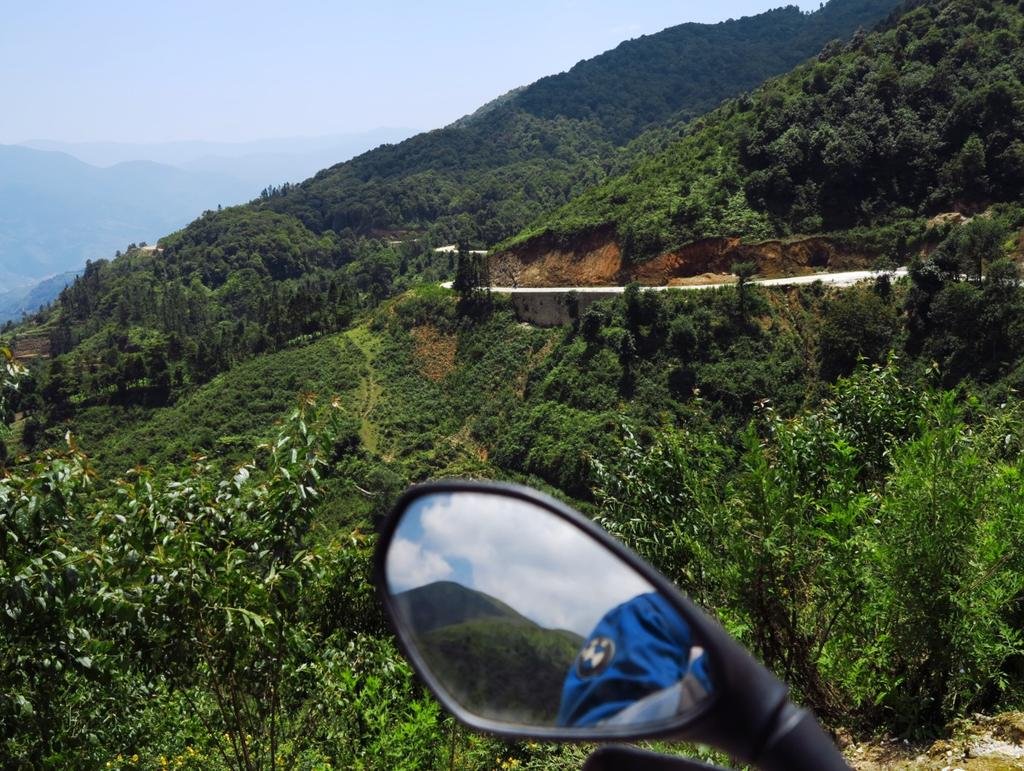
I can't imagine how long they must have taken to build
View attachment 18119
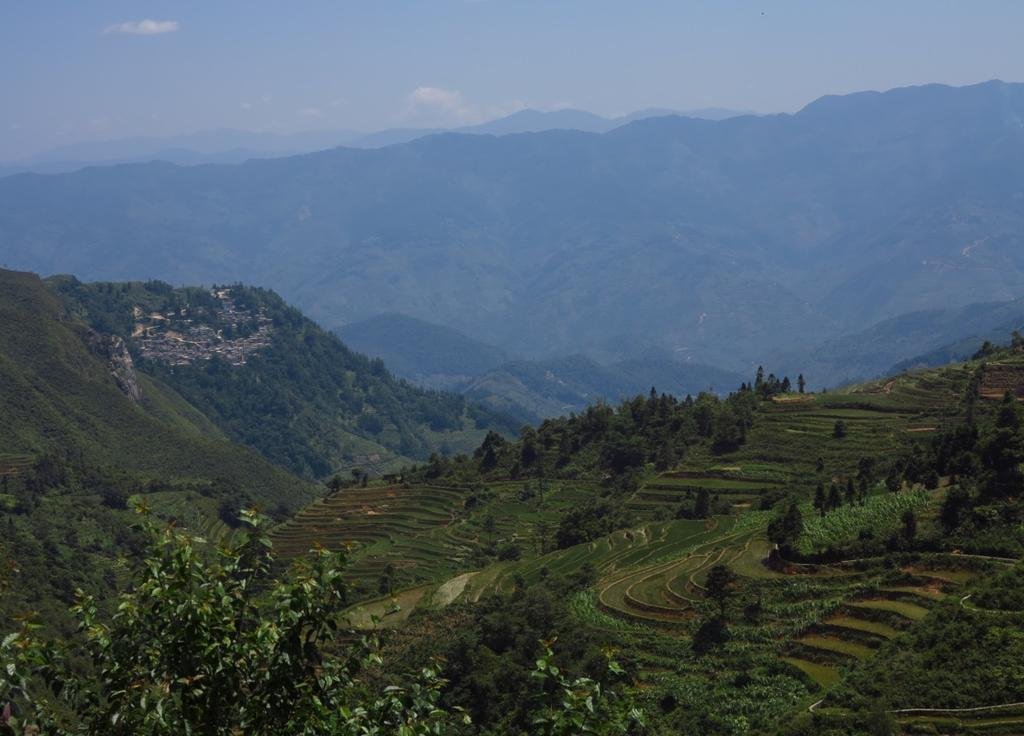
View attachment 18120
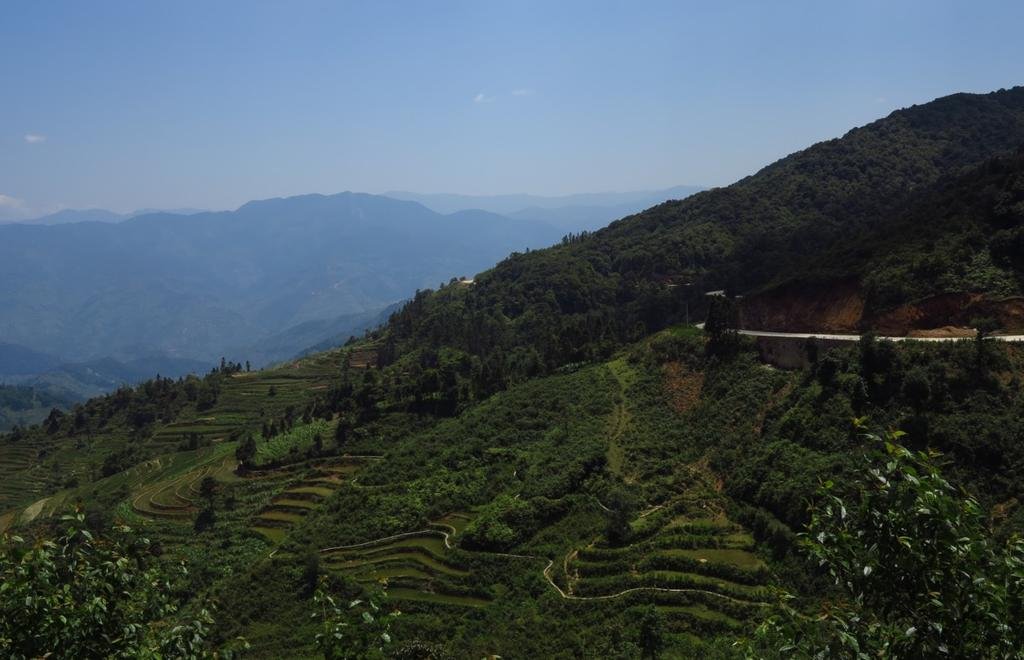
View attachment 18121
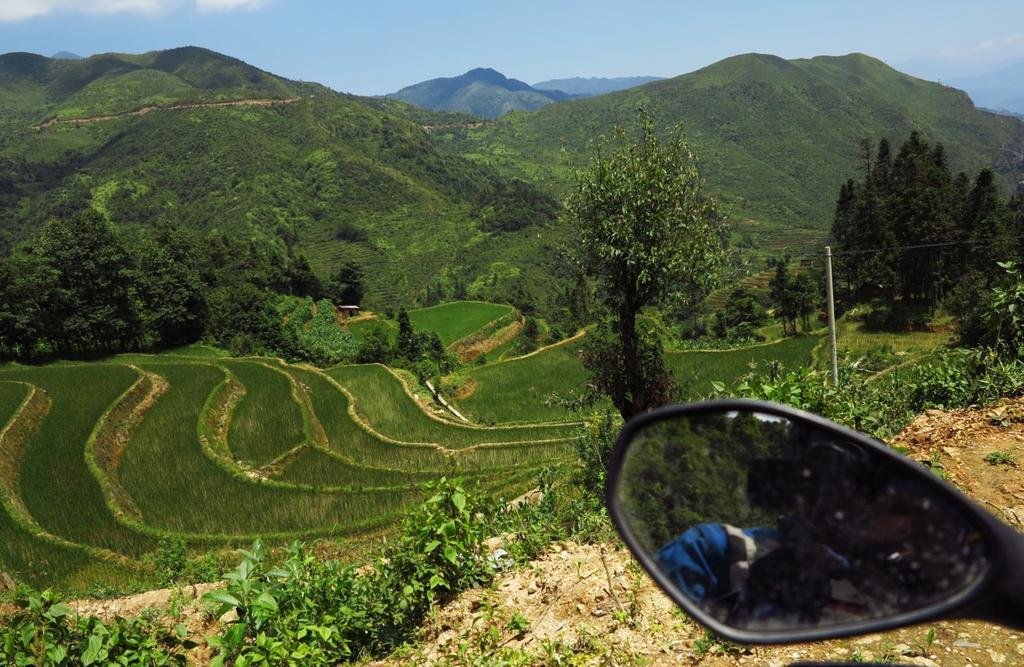
View attachment 18122
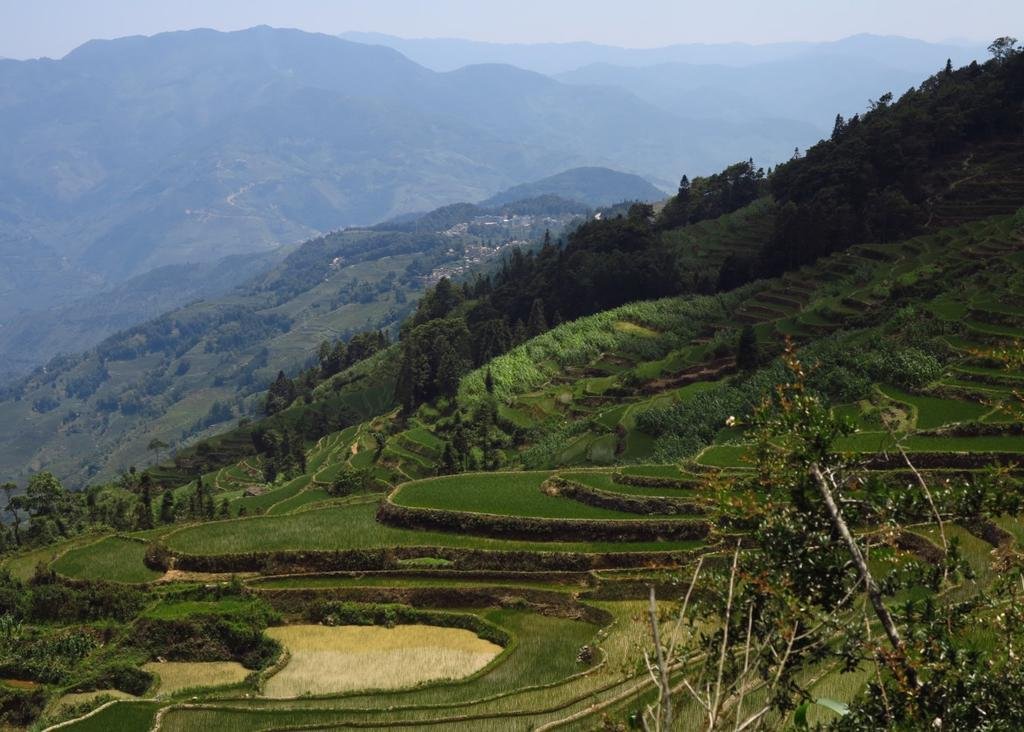
View attachment 18123
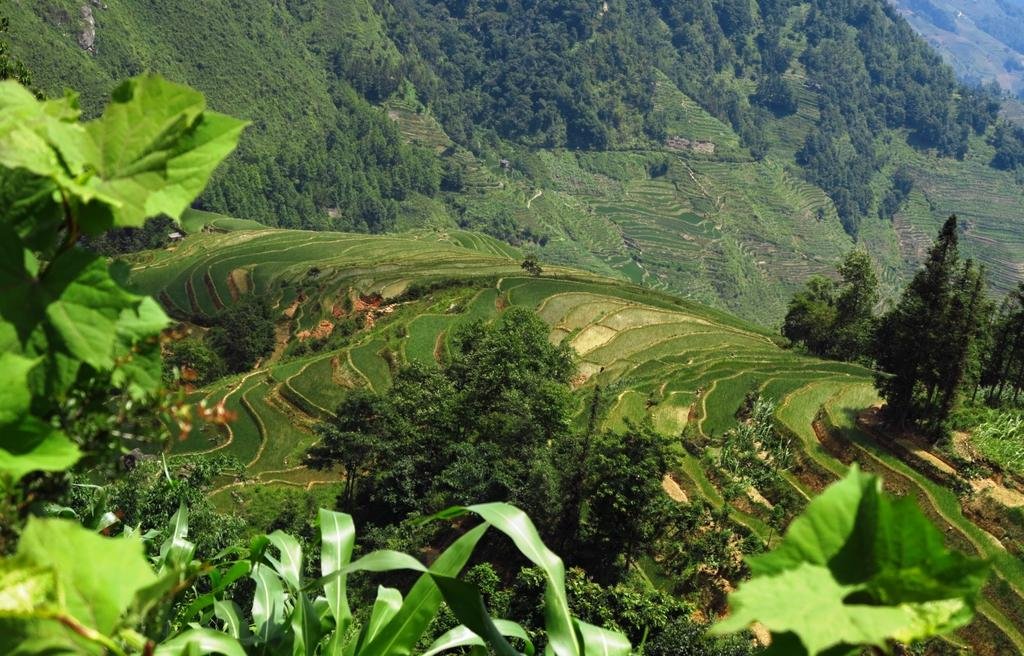
View attachment 18124
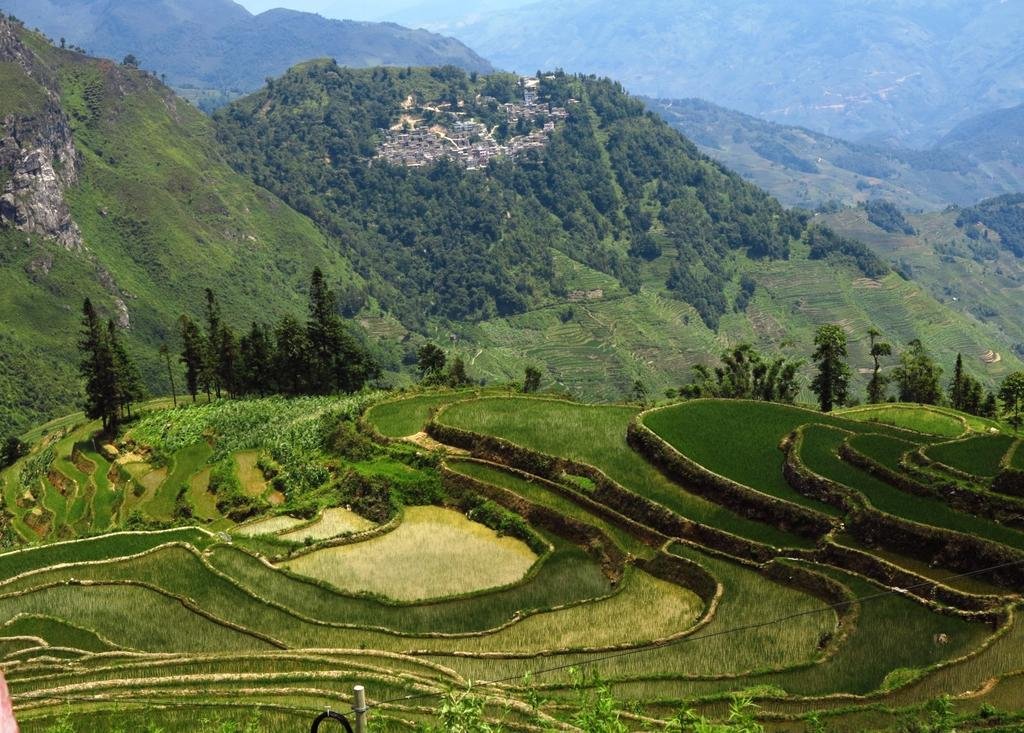
View attachment 18116

View attachment 18118

The fun ahead
View attachment 18117

I can't imagine how long they must have taken to build
View attachment 18119

View attachment 18120

View attachment 18121

View attachment 18122

View attachment 18123

View attachment 18124

KTMphil
Senior member
KTMphil
Senior member
One more section of rice terraces that we weren't expecting on the way down
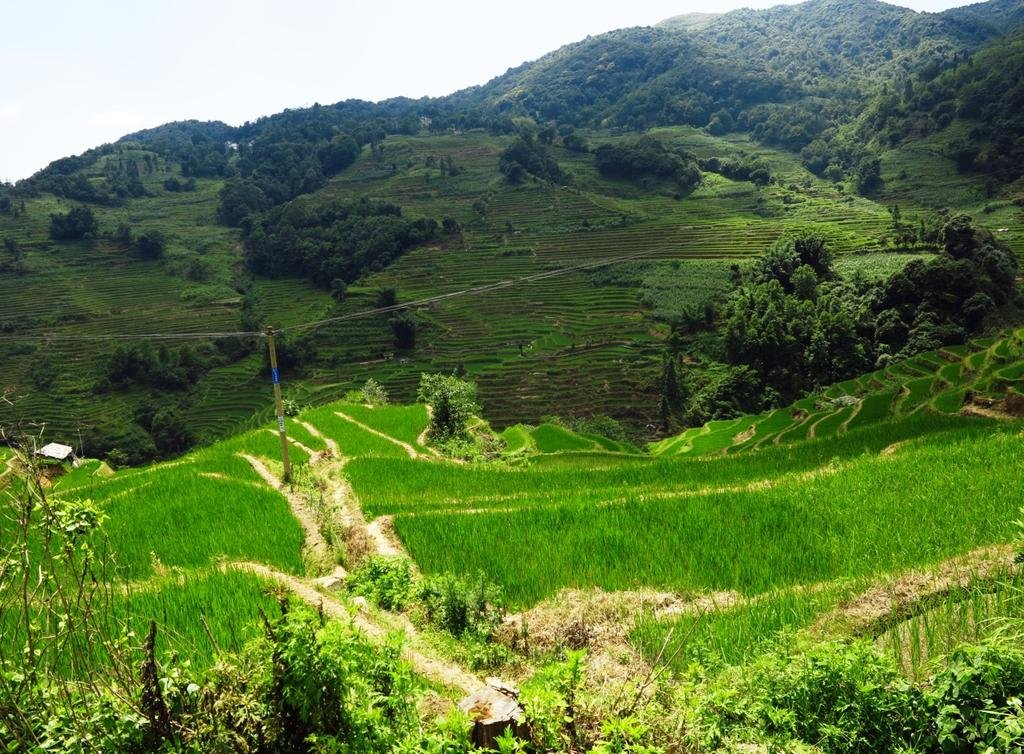
4 on a bike, not that unusual here
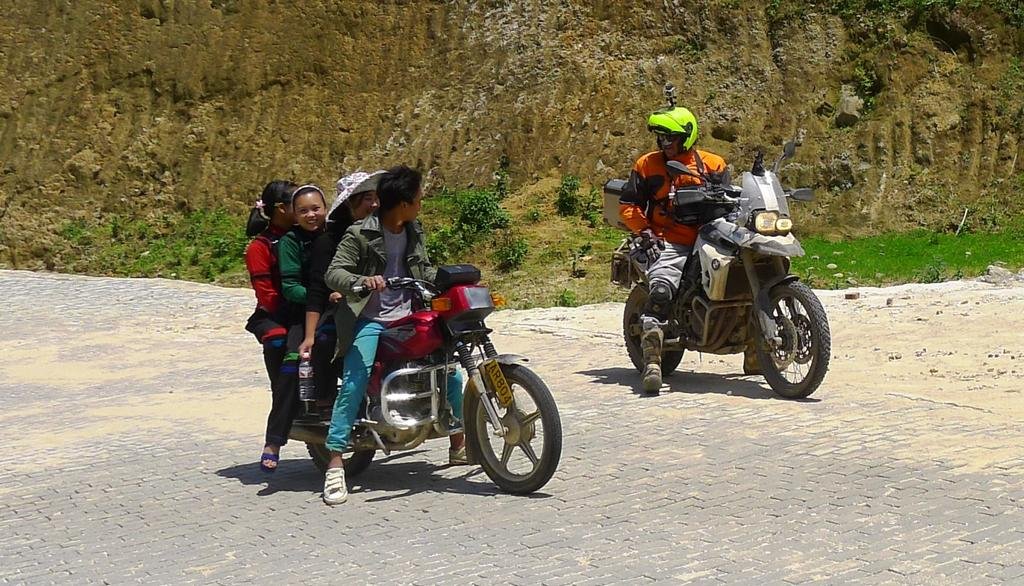
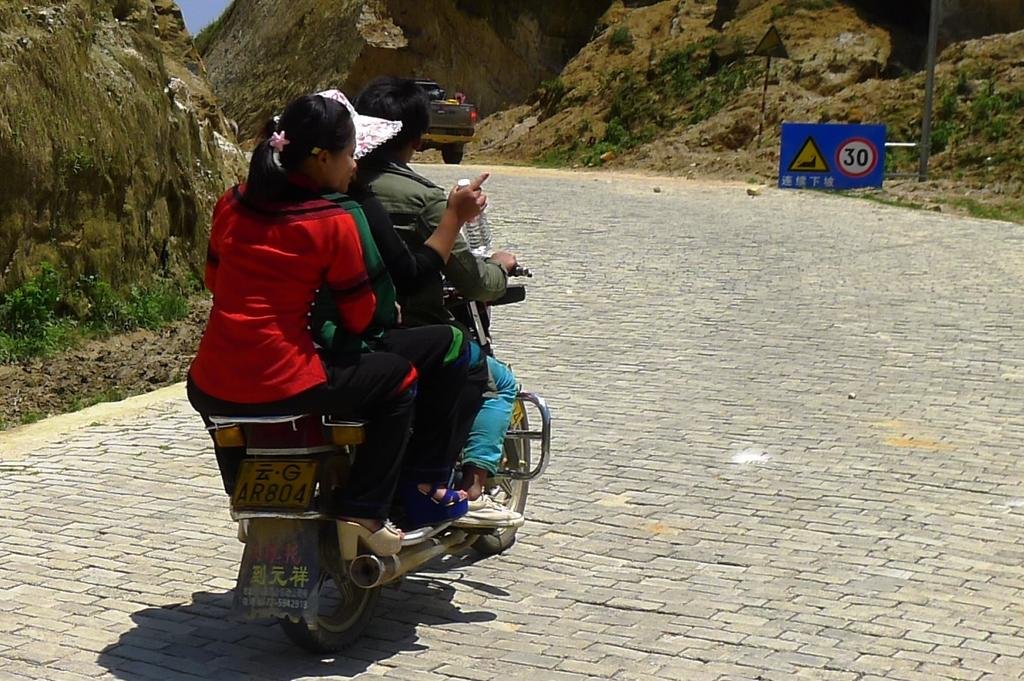
We now had to make some decisions as to where to head for and what would be our evening destination. The choices were Hong He, Yuan Jiang or Mo Jiang (the twins town). Off we headed south west, again picking up the Red River.
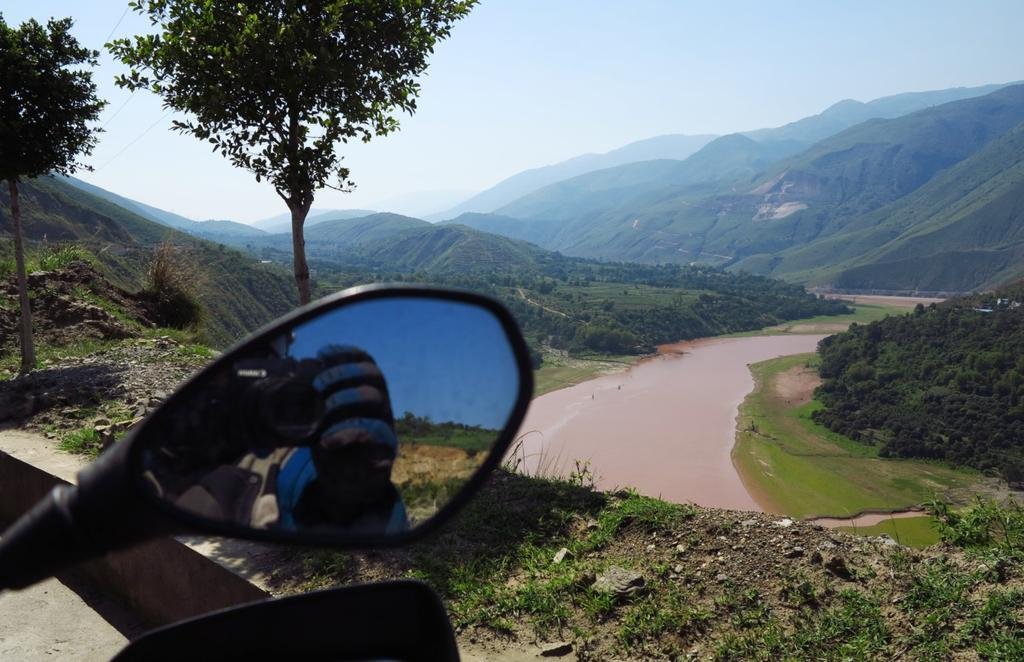
We weren't expecting this, the road that followed the Red River was a superb ride, sweeping curves, great views and hardly any opposing traffic
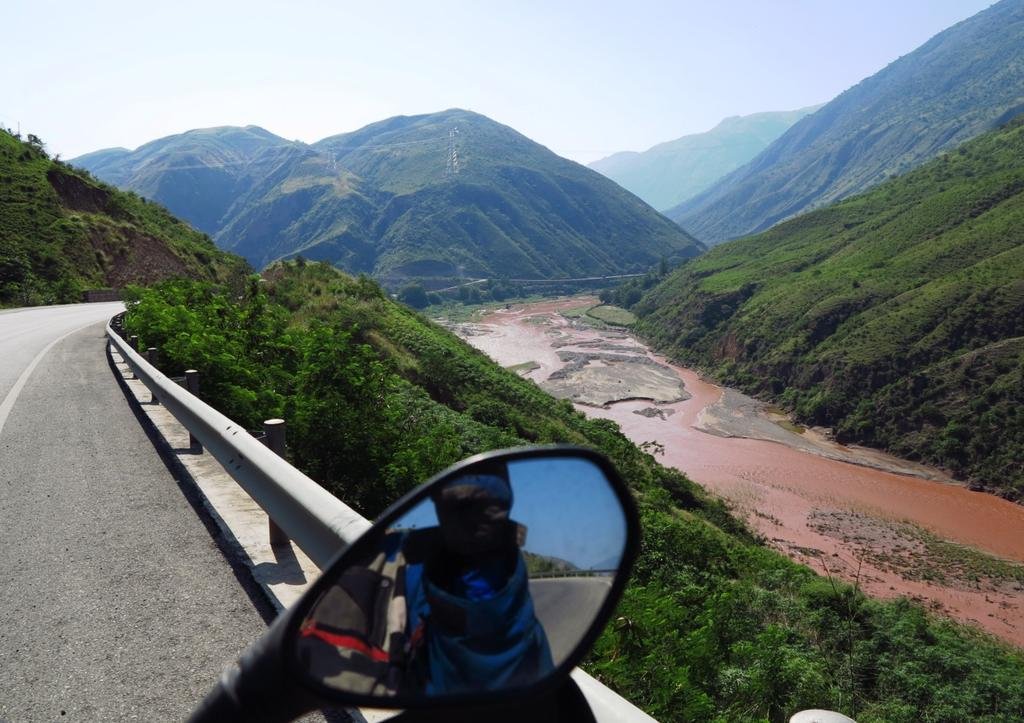
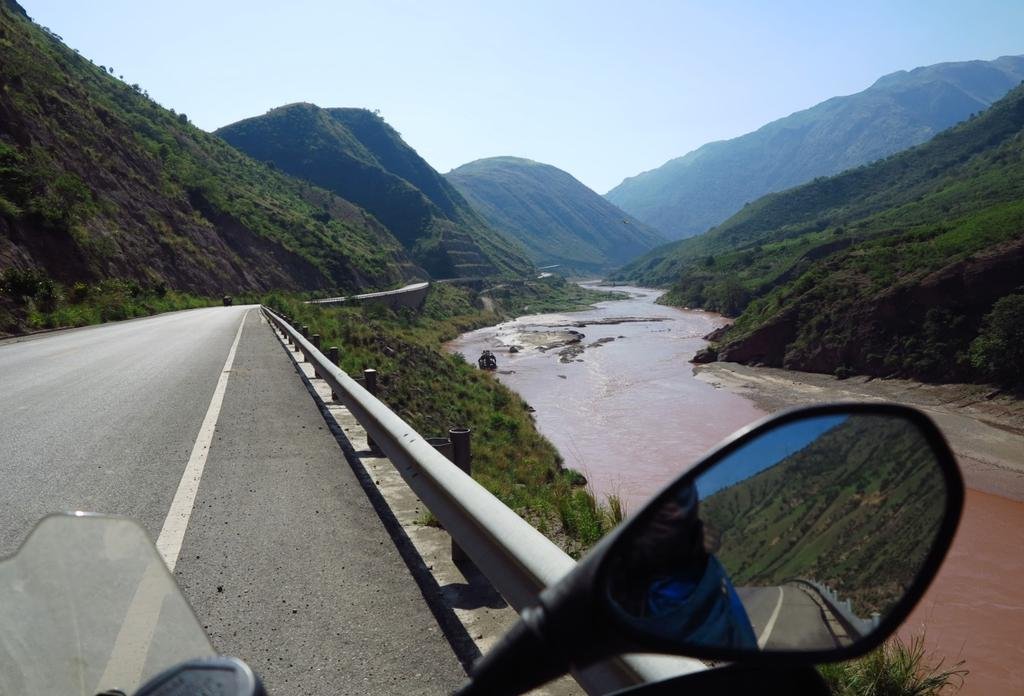

4 on a bike, not that unusual here


We now had to make some decisions as to where to head for and what would be our evening destination. The choices were Hong He, Yuan Jiang or Mo Jiang (the twins town). Off we headed south west, again picking up the Red River.

We weren't expecting this, the road that followed the Red River was a superb ride, sweeping curves, great views and hardly any opposing traffic


KTMphil
Senior member
KTMphil
Senior member
KTMphil
Senior member
This looked like a new concrete road that was following the red river, interesting to see it was already cracked and uneven from heavy truck traffic
View attachment 18151
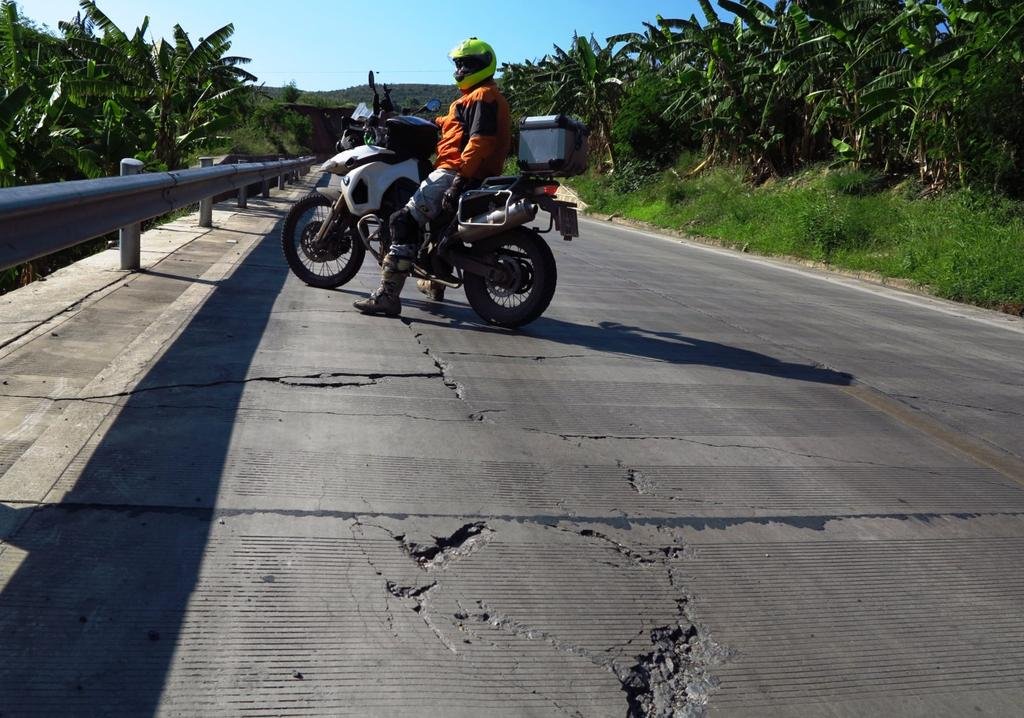
About 10km from Yuan Jiang more rice terraces, it seems this whole region, all the way down to Sapa, Vietnam is of the same culture and farms in the same manner as its probably done for a 1,000 years
View attachment 18152
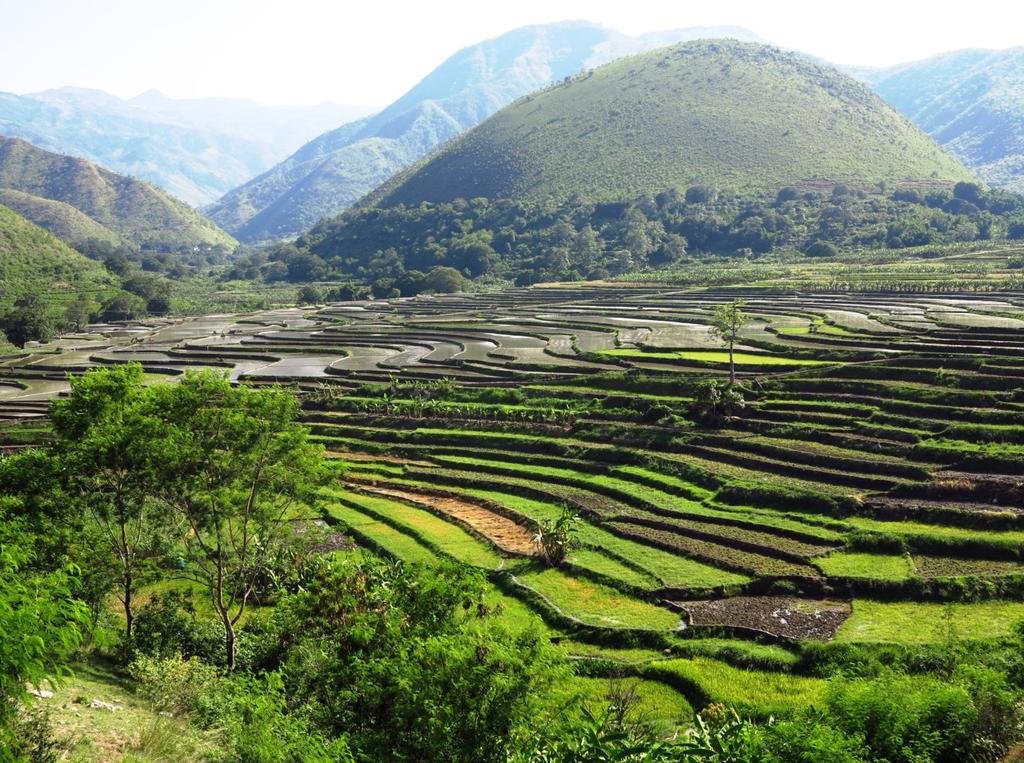
View attachment 18153
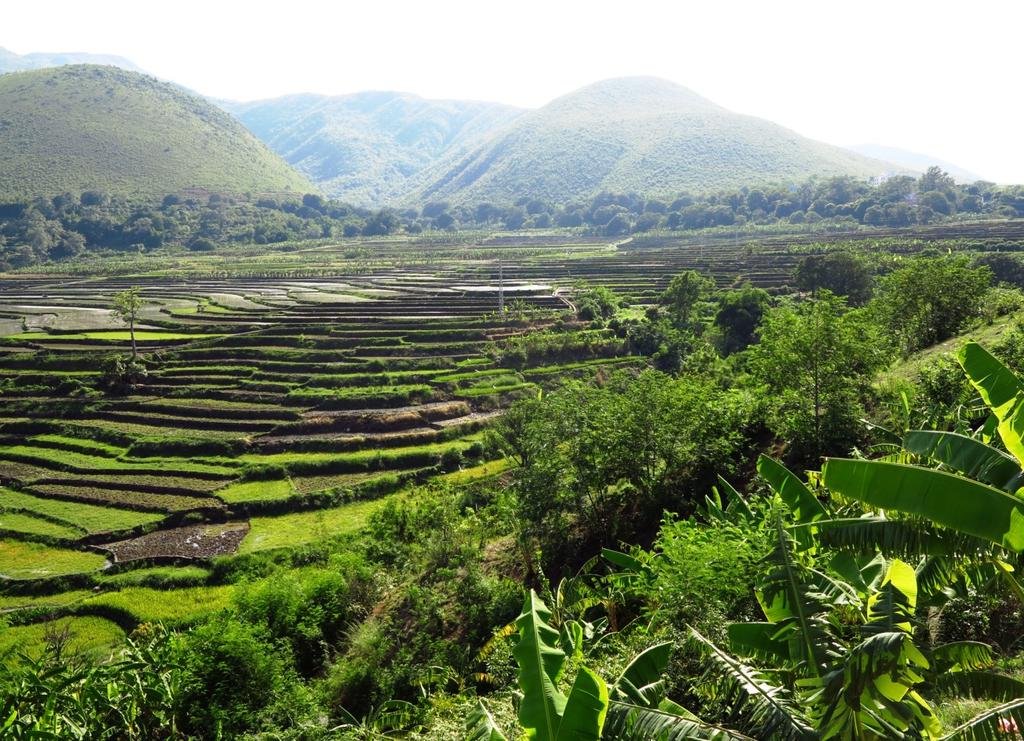
View attachment 18151

About 10km from Yuan Jiang more rice terraces, it seems this whole region, all the way down to Sapa, Vietnam is of the same culture and farms in the same manner as its probably done for a 1,000 years
View attachment 18152

View attachment 18153

KTMphil
Senior member
First glimpses of Yuan Jiang
View attachment 18154
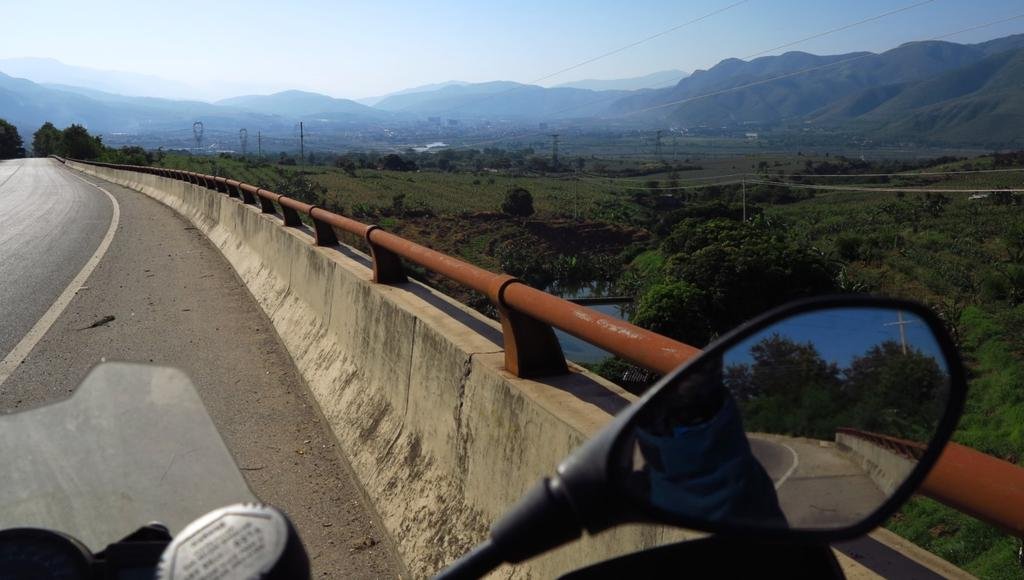
It was a much bigger city than I was expecting, very busy, everyone seeming to be in a rush to get somewhere
View attachment 18155
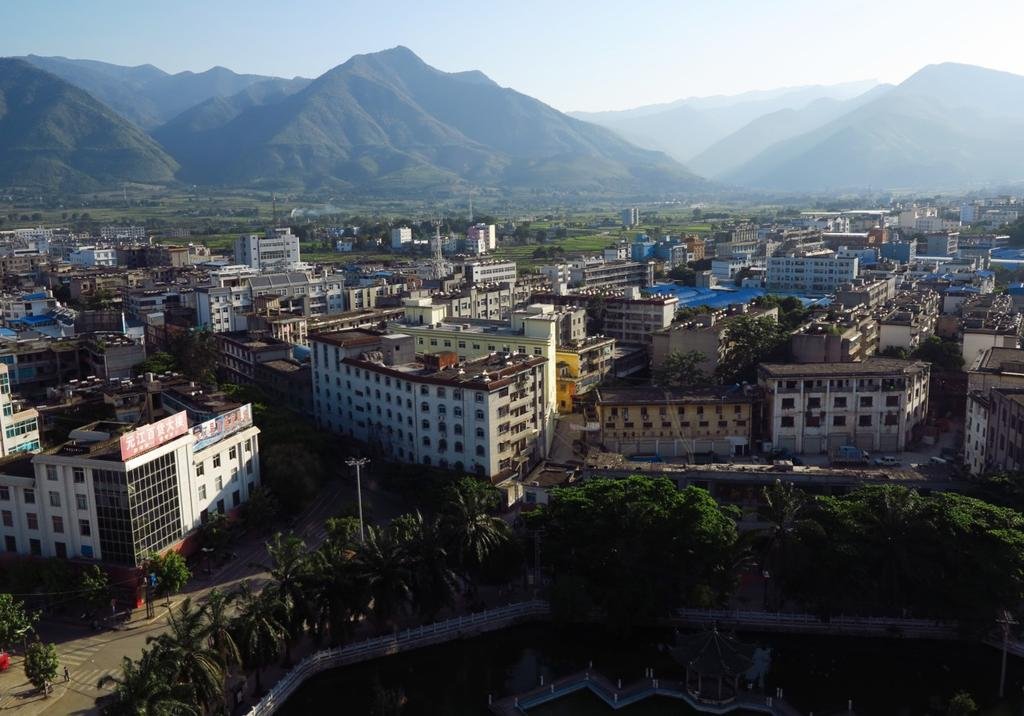
View attachment 18156
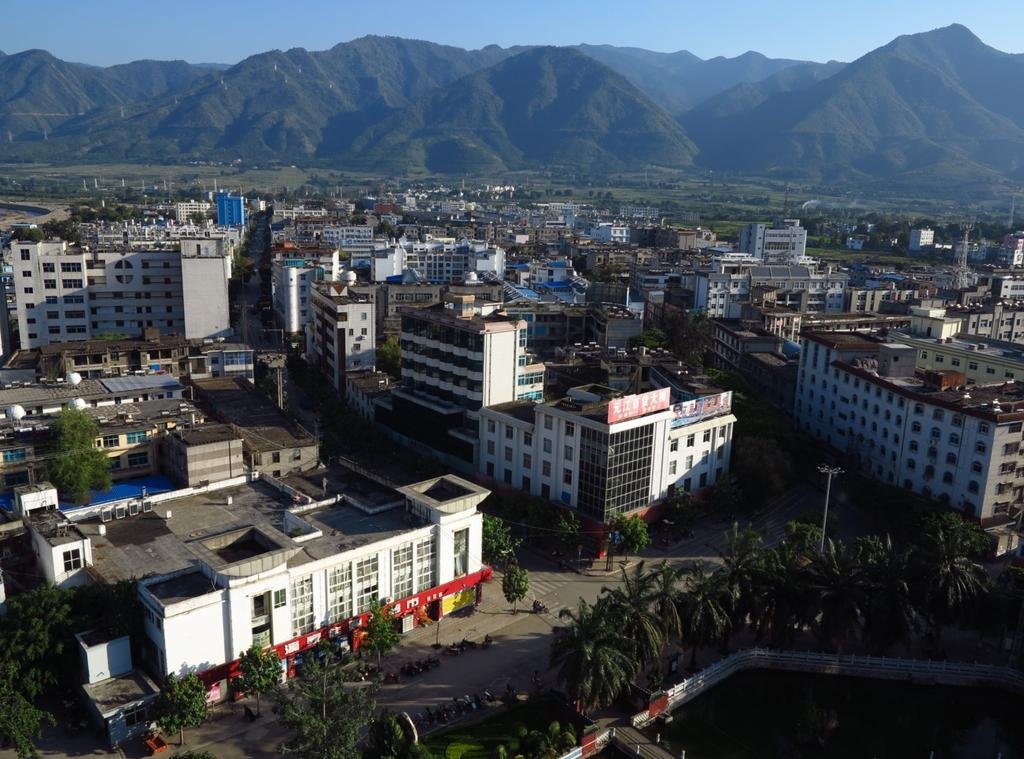
Found a decent hotel if Yuan Jiang
View attachment 18157
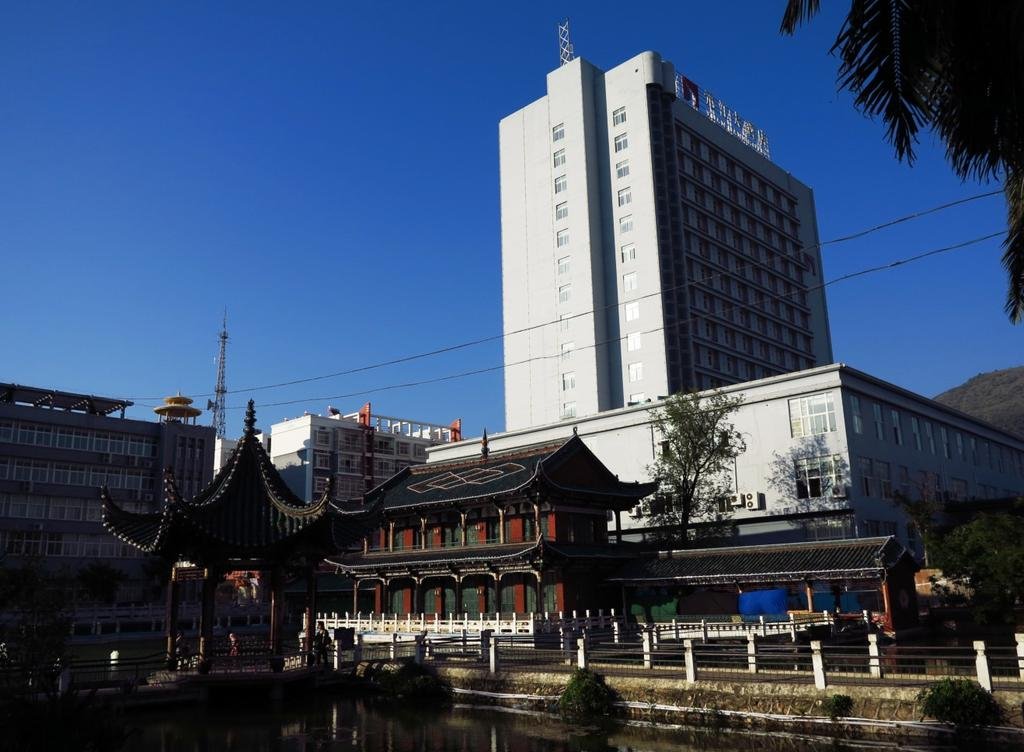
Looked better in the dark as a lot of things do
View attachment 18158
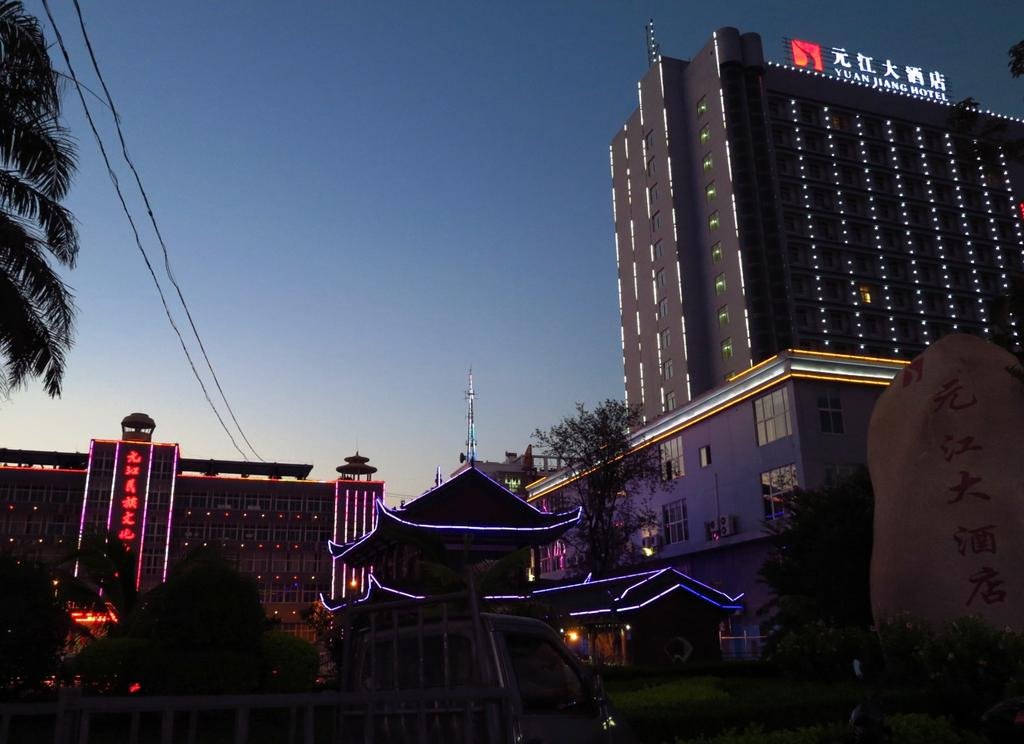
View attachment 18154

It was a much bigger city than I was expecting, very busy, everyone seeming to be in a rush to get somewhere
View attachment 18155

View attachment 18156

Found a decent hotel if Yuan Jiang
View attachment 18157

Looked better in the dark as a lot of things do
View attachment 18158

KTMphil
Senior member
Out and about in Yuan Jiang. Try this place for dinner, superb food
View attachment 18159
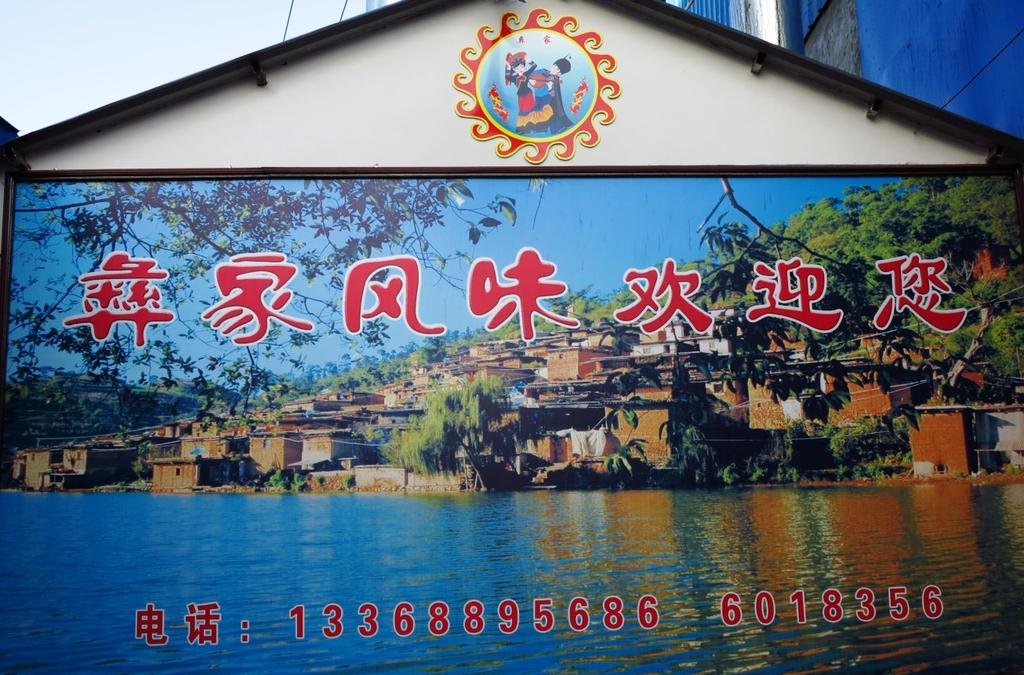
Felt a bit like you were in a hospital though, with only private rooms
View attachment 18160
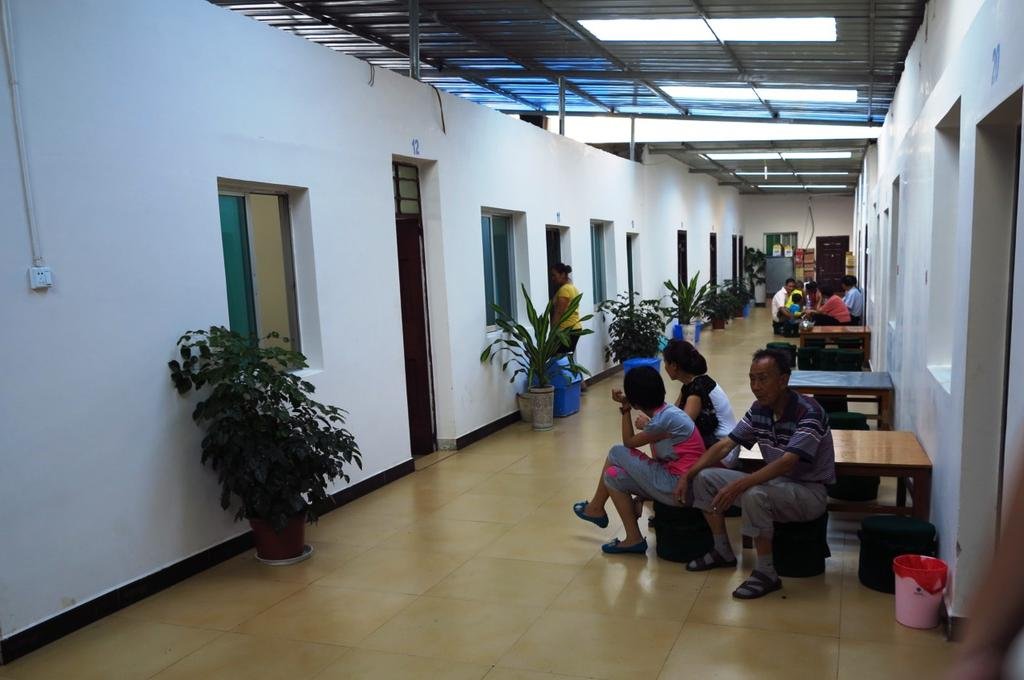
But great food, try the smoked pork
View attachment 18161
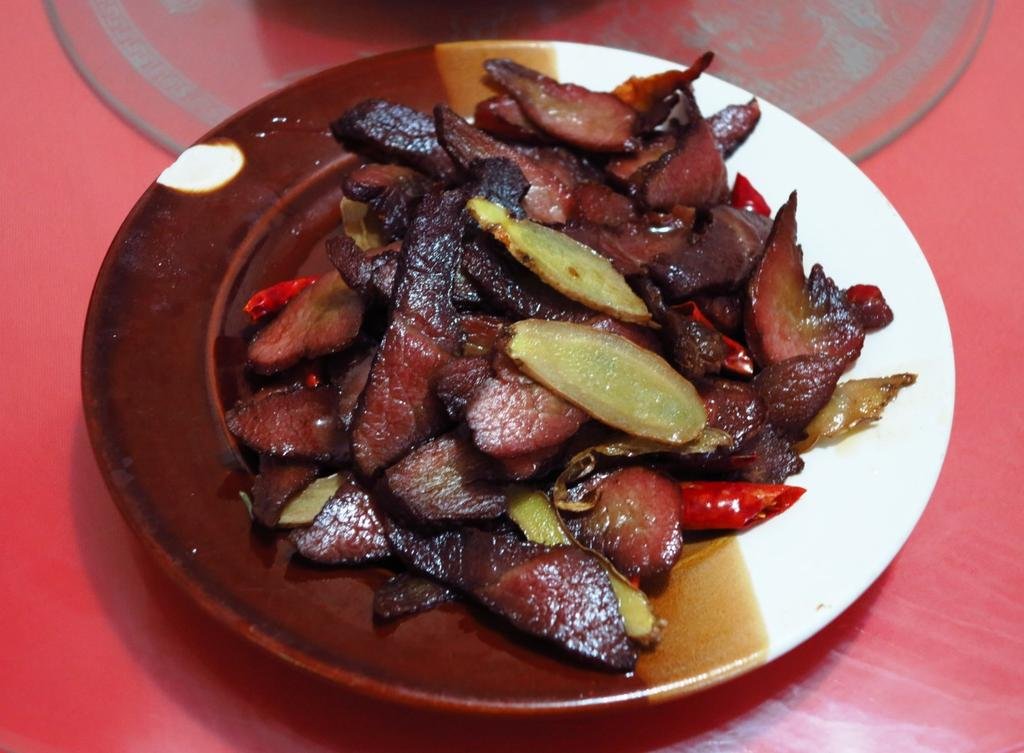
Usual style set up in China, where you go into the restaurant's kitchen a point at what you want
View attachment 18162
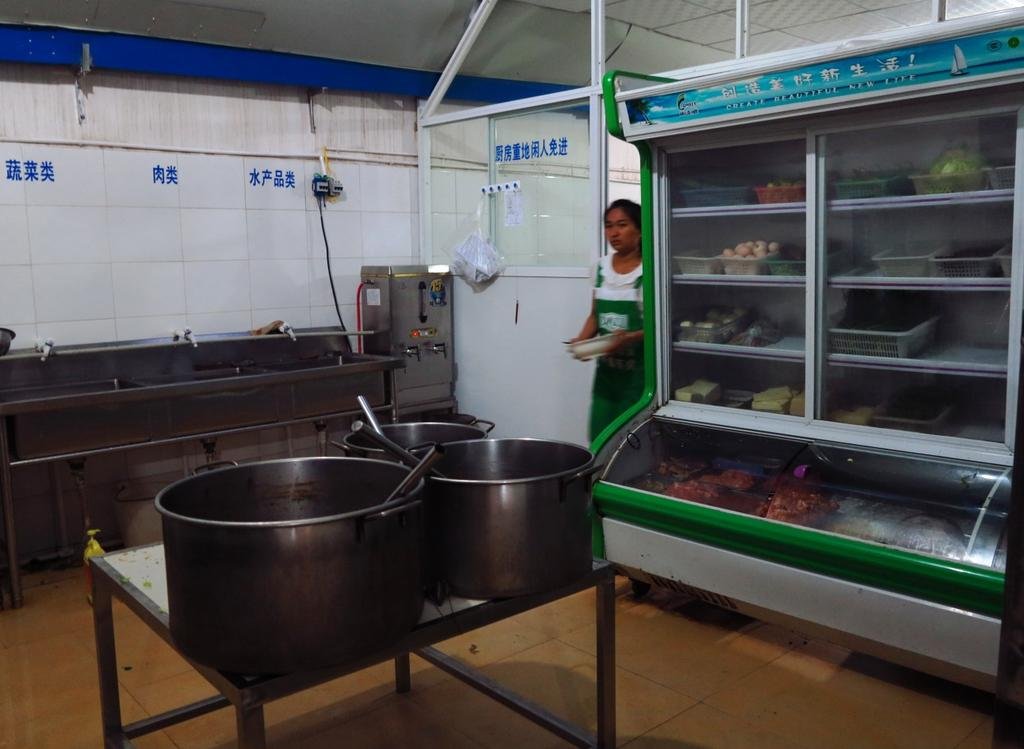
View attachment 18159

Felt a bit like you were in a hospital though, with only private rooms
View attachment 18160

But great food, try the smoked pork
View attachment 18161

Usual style set up in China, where you go into the restaurant's kitchen a point at what you want
View attachment 18162

KTMphil
Senior member
KTMphil
Senior member
KTMphil
Senior member
For tomorrow, it's around 500km to the Boten, Laos/ Mohan, China international border crossing. If we leave early, take the toll road/ motorway, cruising at 120km/h we can probably average around 85 km/h with fuel and urinating stops. If this is the case, we should be able to get through the the border crossing into Laos tomorrow. Reed wants to take a look at Muan Sing (north of Luang Namtha) on our way back SW.
....more tomorrow
....more tomorrow
KTMphil
Senior member
Reeds recollections on our ride from Kunming to Jian Shui
Post # 13 is about our ride from Kunming to Jianshui.
Post # 14 is about our rest day in Jianshui
Dateline: Tuesday, June 11, 2013.
Welcome to the "Shangri-La Here We Come" Blog.
Present location: Jianshui, Yunnan province.
Riding distance from Kunming: 220 ks.
Below is the GPS track of this ride:
 GPS track of today's ride: Dali Lake, east bank to Jian Shui.
GPS track of today's ride: Dali Lake, east bank to Jian Shui.
Driving (moving) time: 4:37
Moving average: 46.5 kph
Highest elevation reached: 2173 meters
Total trip cumulative distance: 3394 kms.
Complete trip GPS track below:
 GPS Track entire trip: Chiang Mai to Tibet Border, return, Jian Shui
GPS Track entire trip: Chiang Mai to Tibet Border, return, Jian Shui
Tomorrow's destination: Yuanyang.
Riding distance: 100 kms
Approximate riding time: 2.5 hours.
Phil Gibbins is taking a ton of photos, way more than me. He is posting them online on his RideAsia.net rider forum. But this url changes daily. To see the photos from our ride to Jianshui and our rest day in Jianshui, you can view them at the following url:
http://www.rideasia.net/motorcycle-...karpo-6-740-meters-22-113-a-12.html#post30049
Hello Interested Parties,
Our trip is winding down. So much more is behind us than ahead and this makes me sad. It seems that every day on this tour so far, somehow, someway, has always been better than the day before. But when we woke up in Kunming for our ride to Jianshui, this streak appeared to be over. The whole point of a motorcycle tour is to find great riding and have fun, and rain has a way of putting a damper on this.
It was a grey, drizzly morning and the temperature was 14C. And we knew from yesterday's ride into Kunming that the ride out of the city was going to be bereft of any riding pleasure. And it was. The rain, decreased visibility drastically as well as degraded our traction, making a treacherous drive even more so. Several times I had close calls with vehicles much larger than myself doing the stupidest things in front of me. I have come to expect such moves from the Chinese drivers at all times and thus was able to avoid grievous injury. Using my horn got no one's attention so I started yelling at people. The shock value of doing this worked wonders, because whenever I yelled, the drivers stopped in mid-maneuver and instead just stared at me and forgot to drive.
When we left the city limits and climbed into the southern mountains that ring the city, the rain increased in intensity and the temperature started dropping, all the way down to 9C during one stretch. Every couple of seconds I needed to swipe my face shield with my glove, and this meant taking a much needed hand off my handlebars. The light drizzle turned into a heavy drizzle and back again many times. It never came down heavy and never stopped. The temperatures bounced with the altitude, between 9 and 14C, but at least I wasn't cold. On the verge, yes, but okay. I was only wearing a synthetic long-sleeve shirt under my body armor. Over that a sweatshirt and my outer layer was a waterproof, zip-up jacket made by Northface. The F800GS kept my body and legs remarkably dry and I am sure that was not by accident. My gloves were soaked through, though.
Couldn't see much of anything in terms of scenery as the rain decreased our visibility and our eyeballs had to be glued to that piece of roadway directly in front of us.
Phil and I were pretty miserable when we stopped for lunch but elated to still be alive. And what a lunch it was. We dined in a restaurant famous for duck and the one we ate was fantastic. The ducks are cooked in big, rotund, barrel-shaped clay ovens. The heat comes up from the bottom and the ducks hang down by their necks on metal s-hooks from the inside lip of the oven. Sumptuous, and a great price, as this full-blown feast came to under USD5 per head.
The duck brightened up an overall dismal day, and once again we hopped on our bikes for the final 40 km stretch into town. There was a highway directly to our west but this was one of the highways mcs are not allowed to use. The local road we were forced to ride was in poor condition, with big pools of water covering the road surface, lots of potholes and lots of mud. Phil and I really slowed it down and we limped into Jianshui in the late afternoon. And then it stopped raining.
We found a steakhouse in a shopping mall outside our hotel. Phil has had just about enough of Chinese food by this point and ordered a proper surf and turf which he said wasn't bad. I ate nothing as I was still stuffed from lunch. After dinner we strolled into the old quarter of Jianshui where most of the old buildings are still intact and nicely restored. The ground floors were a series of boutiques selling mostly women clothes and shoes, antique shops, silver and jewelry stores, hotels, guesthouses, and restaurants. This area is famous for a black-type of pottery and a lot of stores were selling this.
The old quarter had a nice atmosphere and feel to it, somewhat marred by frequent horn-blaring scooters and cars riding down what should be a pedestrian-only area. Chinese drivers surely have a love affair with their horns.
This old quarter was similar to, but different from all the other old quarters we visited during this tour. It is great fun strolling through them, marveling at the intricate architectural details and seeing how Chinese tourists enjoy spending their holiday time. Everyone was friendly and in upbeat moods. I would be surprised if this Old Quarter is not turned one day into a UNESCO World Heritage site.
Phil and I turned a corner and a huge, red building that looked somewhat like the facade of the Forbidden City in Beijing loomed ahead of us. It was one of the restored city gates. There was a stairway up to the pavilion level and we took a bunch of pictures on the Old Quarter side. When we wandered over to the opposite side of the gate and looked down at the square below us, it was filled with groups of people dancing to different prerecorded music blaring from portable stereos.
When we saw the activity below us, Phil and I looked at each other and smiled, because a scene like this is exactly the reason why we drove 3500 kms to find and enjoy. This was the essence of adventure travel, discovering something so far removed from our everyday experiences. You turn a corner on a tour such as ours and you have no idea what you will find. Sometimes nothing, and sometimes something awe inspiring. This was one of the latters.
We walked down to the dancers and took a bunch more photos. One group was dancing in synchronized steps in a big circle to an atonal but pleasant hilltribe folk tune. They wore little contraptions on their fingers which they snapped quite loudly on the downbeats. We watched the goings on for an hour and retired to our hotels for the night.
Last night I slept in a different hotel from everyone else, mainly because it was more expensive. It was a restored mansion and formal gardens of an extremely wealthy family that was built at the turn of the last century. This is one of two family mansions like this left in the country that used to have thousands. All the others fell victim to the cultural revolution. My room was filled with antique furniture and a four-poster bed. In my closet was a period Chinese robe, hat, and slippers that I could wear if I really wanted to get into the mood.
Today dawned just as fine and nice as all the others. We went to visit another ancient Chinese city on the outskirts of Jianshui that has been turned into a living museum. Check out Phil's photos of this village at the url above. Another great place to take a ton of photos.
Then we visited an old bridge sitting on seventeen spans, with two old gate houses; one in the middle and one at one end.
After this we called it a day and tomorrow we are off to see some famous rice fields which have to be seen to be believed, I hope it doesn't rain.
Time for me to pack and say goodnight. My laundry just arrived and it cost USD50. Ouch.
That's it for now. Bye, bye.
Post # 13 is about our ride from Kunming to Jianshui.
Post # 14 is about our rest day in Jianshui
Dateline: Tuesday, June 11, 2013.
Welcome to the "Shangri-La Here We Come" Blog.
Present location: Jianshui, Yunnan province.
Riding distance from Kunming: 220 ks.
Below is the GPS track of this ride:
 GPS track of today's ride: Dali Lake, east bank to Jian Shui.
GPS track of today's ride: Dali Lake, east bank to Jian Shui.Driving (moving) time: 4:37
Moving average: 46.5 kph
Highest elevation reached: 2173 meters
Total trip cumulative distance: 3394 kms.
Complete trip GPS track below:
 GPS Track entire trip: Chiang Mai to Tibet Border, return, Jian Shui
GPS Track entire trip: Chiang Mai to Tibet Border, return, Jian ShuiTomorrow's destination: Yuanyang.
Riding distance: 100 kms
Approximate riding time: 2.5 hours.
Phil Gibbins is taking a ton of photos, way more than me. He is posting them online on his RideAsia.net rider forum. But this url changes daily. To see the photos from our ride to Jianshui and our rest day in Jianshui, you can view them at the following url:
http://www.rideasia.net/motorcycle-...karpo-6-740-meters-22-113-a-12.html#post30049
Hello Interested Parties,
Our trip is winding down. So much more is behind us than ahead and this makes me sad. It seems that every day on this tour so far, somehow, someway, has always been better than the day before. But when we woke up in Kunming for our ride to Jianshui, this streak appeared to be over. The whole point of a motorcycle tour is to find great riding and have fun, and rain has a way of putting a damper on this.
It was a grey, drizzly morning and the temperature was 14C. And we knew from yesterday's ride into Kunming that the ride out of the city was going to be bereft of any riding pleasure. And it was. The rain, decreased visibility drastically as well as degraded our traction, making a treacherous drive even more so. Several times I had close calls with vehicles much larger than myself doing the stupidest things in front of me. I have come to expect such moves from the Chinese drivers at all times and thus was able to avoid grievous injury. Using my horn got no one's attention so I started yelling at people. The shock value of doing this worked wonders, because whenever I yelled, the drivers stopped in mid-maneuver and instead just stared at me and forgot to drive.
When we left the city limits and climbed into the southern mountains that ring the city, the rain increased in intensity and the temperature started dropping, all the way down to 9C during one stretch. Every couple of seconds I needed to swipe my face shield with my glove, and this meant taking a much needed hand off my handlebars. The light drizzle turned into a heavy drizzle and back again many times. It never came down heavy and never stopped. The temperatures bounced with the altitude, between 9 and 14C, but at least I wasn't cold. On the verge, yes, but okay. I was only wearing a synthetic long-sleeve shirt under my body armor. Over that a sweatshirt and my outer layer was a waterproof, zip-up jacket made by Northface. The F800GS kept my body and legs remarkably dry and I am sure that was not by accident. My gloves were soaked through, though.
Couldn't see much of anything in terms of scenery as the rain decreased our visibility and our eyeballs had to be glued to that piece of roadway directly in front of us.
Phil and I were pretty miserable when we stopped for lunch but elated to still be alive. And what a lunch it was. We dined in a restaurant famous for duck and the one we ate was fantastic. The ducks are cooked in big, rotund, barrel-shaped clay ovens. The heat comes up from the bottom and the ducks hang down by their necks on metal s-hooks from the inside lip of the oven. Sumptuous, and a great price, as this full-blown feast came to under USD5 per head.
The duck brightened up an overall dismal day, and once again we hopped on our bikes for the final 40 km stretch into town. There was a highway directly to our west but this was one of the highways mcs are not allowed to use. The local road we were forced to ride was in poor condition, with big pools of water covering the road surface, lots of potholes and lots of mud. Phil and I really slowed it down and we limped into Jianshui in the late afternoon. And then it stopped raining.
We found a steakhouse in a shopping mall outside our hotel. Phil has had just about enough of Chinese food by this point and ordered a proper surf and turf which he said wasn't bad. I ate nothing as I was still stuffed from lunch. After dinner we strolled into the old quarter of Jianshui where most of the old buildings are still intact and nicely restored. The ground floors were a series of boutiques selling mostly women clothes and shoes, antique shops, silver and jewelry stores, hotels, guesthouses, and restaurants. This area is famous for a black-type of pottery and a lot of stores were selling this.
The old quarter had a nice atmosphere and feel to it, somewhat marred by frequent horn-blaring scooters and cars riding down what should be a pedestrian-only area. Chinese drivers surely have a love affair with their horns.
This old quarter was similar to, but different from all the other old quarters we visited during this tour. It is great fun strolling through them, marveling at the intricate architectural details and seeing how Chinese tourists enjoy spending their holiday time. Everyone was friendly and in upbeat moods. I would be surprised if this Old Quarter is not turned one day into a UNESCO World Heritage site.
Phil and I turned a corner and a huge, red building that looked somewhat like the facade of the Forbidden City in Beijing loomed ahead of us. It was one of the restored city gates. There was a stairway up to the pavilion level and we took a bunch of pictures on the Old Quarter side. When we wandered over to the opposite side of the gate and looked down at the square below us, it was filled with groups of people dancing to different prerecorded music blaring from portable stereos.
When we saw the activity below us, Phil and I looked at each other and smiled, because a scene like this is exactly the reason why we drove 3500 kms to find and enjoy. This was the essence of adventure travel, discovering something so far removed from our everyday experiences. You turn a corner on a tour such as ours and you have no idea what you will find. Sometimes nothing, and sometimes something awe inspiring. This was one of the latters.
We walked down to the dancers and took a bunch more photos. One group was dancing in synchronized steps in a big circle to an atonal but pleasant hilltribe folk tune. They wore little contraptions on their fingers which they snapped quite loudly on the downbeats. We watched the goings on for an hour and retired to our hotels for the night.
Last night I slept in a different hotel from everyone else, mainly because it was more expensive. It was a restored mansion and formal gardens of an extremely wealthy family that was built at the turn of the last century. This is one of two family mansions like this left in the country that used to have thousands. All the others fell victim to the cultural revolution. My room was filled with antique furniture and a four-poster bed. In my closet was a period Chinese robe, hat, and slippers that I could wear if I really wanted to get into the mood.
Today dawned just as fine and nice as all the others. We went to visit another ancient Chinese city on the outskirts of Jianshui that has been turned into a living museum. Check out Phil's photos of this village at the url above. Another great place to take a ton of photos.
Then we visited an old bridge sitting on seventeen spans, with two old gate houses; one in the middle and one at one end.
After this we called it a day and tomorrow we are off to see some famous rice fields which have to be seen to be believed, I hope it doesn't rain.
Time for me to pack and say goodnight. My laundry just arrived and it cost USD50. Ouch.
That's it for now. Bye, bye.
2wheels
Community Manager
KTMphil
Senior member
Never seen one of these before in China


KTMphil
Senior member
This is one great gh in Luang Namtha, Laos for 110, 000 kip


KTMphil
Senior member
KTMphil
Senior member
We made the Mohan, China / Boten, Laos border crossing with ease, this is the last barrier out of China back into Laos

A Laos bus at the China border headed for Kunming. A detailed check of their luggage by Chinese Customs and army

Clearing out of Chinese immigration at Mohan


A Laos bus at the China border headed for Kunming. A detailed check of their luggage by Chinese Customs and army

Clearing out of Chinese immigration at Mohan

KTMphil
Senior member
At the Boten Laos checkpoint

The new Boten Laos checkpoint nearly finished

The Laos side slightly less flashy than the Chinese side

Bikes and support vehicle cleared into Laos


The new Boten Laos checkpoint nearly finished

The Laos side slightly less flashy than the Chinese side

Bikes and support vehicle cleared into Laos

KTMphil
Senior member
A few hours of daylight left and we managed to push westwards to Luang Namtha

The first ice cold Beerlao in Laos, nothing like it


The first ice cold Beerlao in Laos, nothing like it

KTMphil
Senior member
Into the Zuela GH 110,000 Kip, the lady owner is one of the most beautiful Laos ladies you'll ever see


Real nice wooden rooms



Real nice wooden rooms

KTMphil
Senior member
Lots of talk at dinner whether we could make Chiang Mai from Luang Namtha. It would all depend on how efficient the ferry would be, lunchtime and other problems could mean a 3 hour wait.
Westwards along R 3 in Laos, Reed spots a "village gate" into one of the Hmong villages

There will be one of these at each end of a village & they're supposed to guard the village against evil spirits
There is a carving of a man and a woman on each side of the gate


The sharp bamboo represents swords


Not many of these around now but watch for them as you approach the villages in Laos
Westwards along R 3 in Laos, Reed spots a "village gate" into one of the Hmong villages

There will be one of these at each end of a village & they're supposed to guard the village against evil spirits
There is a carving of a man and a woman on each side of the gate


The sharp bamboo represents swords


Not many of these around now but watch for them as you approach the villages in Laos
KTMphil
Senior member
Firewood gatherers


Ever noticed that the rice storage houses are always out of the village? This is insurance against fire. If the village became a blaze from someone cooking etc... by having the precious rice stock away from where the fire could spread, the village would never be without food




Ever noticed that the rice storage houses are always out of the village? This is insurance against fire. If the village became a blaze from someone cooking etc... by having the precious rice stock away from where the fire could spread, the village would never be without food


KTMphil
Senior member
Making great time, arriving in Houay Xai, Laos.
This specialty wood looks like firewood, but why go to all the effort of importing firewood into Laos? It's actually a special kind of wood that's used to make Lacquer



Backpackers on their way to Luang Prabang by long boat

Cargo boat on the Mekong


This specialty wood looks like firewood, but why go to all the effort of importing firewood into Laos? It's actually a special kind of wood that's used to make Lacquer



Backpackers on their way to Luang Prabang by long boat

Cargo boat on the Mekong


KTMphil
Senior member
The silly ferry rules were underway. We were allowed on a Thai flagged ferry (in Houay Xai, Laos) & were the ONLY vehicles, the pickup wasn't allowed on, they said it wasn't because the Ferry was Thai flagged it was because they had to wait for some containers that were on the way from Boten, this didn't make any sense and the pickup had to wait 2 hours.






KTMphil
Senior member
5pm back in Chiang Mai - funny enough Con there again to welcome us back (check the first photo on page 1 !)

This is one of the most awesome bike trips you can do, nothing i've done before comes close (road), a real joy of constant, stimulating surroundings that are ever changing. Reed is sold on it and soon will be announcing a "Chiang Mai to the Tibet Border" tour which will commence at the end of September, 2013 (the best time to go thats why this date)...... As soon as I know more I'll announce it.
Still on overload here, I hope you enjoyed the story - All 4,914 km's of it!

The truck looking like it's been on an adventure for sure


This is one of the most awesome bike trips you can do, nothing i've done before comes close (road), a real joy of constant, stimulating surroundings that are ever changing. Reed is sold on it and soon will be announcing a "Chiang Mai to the Tibet Border" tour which will commence at the end of September, 2013 (the best time to go thats why this date)...... As soon as I know more I'll announce it.
Still on overload here, I hope you enjoyed the story - All 4,914 km's of it!

The truck looking like it's been on an adventure for sure

Ally
Well-known member
Really enjoyed the report Phil, good to see you made it back & are in one piece.
Relax !
Ally
Relax !
Ally
2wheels
Community Manager
Epic ride and welcome back. 

screamingeagle
Member
- Joined
- May 30, 2012
- Bikes
- HD CVO Springer
Phil you are a legend - no doubt. You have made it to one of my favourite places in China - twice. I am jealous and may decide to hate you a bit for it.
Thanks for doing the trip and letting us all tag along. Kudos to you and your fellow adventurers.
PS Did you walk up the temple stair case in Shangri La this time?? Great work out at the altitude.
Thanks for doing the trip and letting us all tag along. Kudos to you and your fellow adventurers.
PS Did you walk up the temple stair case in Shangri La this time?? Great work out at the altitude.
Really Phil and Reed, you should collect all texts and pictures and create an ebook, offer it for download at a few dollars! I am pretty sure that will make some nice long term money.
Phil...Reed......aaaaah famous racer, Phil Read!
Phil...Reed......aaaaah famous racer, Phil Read!
KTMphil
Senior member
Phil you are a legend - no doubt. You have made it to one of my favourite places in China - twice. I am jealous and may decide to hate you a bit for it.
Thanks for doing the trip and letting us all tag along. Kudos to you and your fellow adventurers.
PS Did you walk up the temple stair case in Shangri La this time?? Great work out at the altitude.
Didn't walk up it, short on time is my excuse (this was the third trip into China).
KTMphil
Senior member
Really Phil and Reed, you should collect all texts and pictures and create an ebook, offer it for download at a few dollars! I am pretty sure that will make some nice long term money.
Phil...Reed......aaaaah famous racer, Phil Read!
Not a bad idea Marcel
| Thread starter | Similar threads | Forum | Replies | Date |
|---|---|---|---|---|
| R | Tours all over the road | China Ride Reports | 0 | |
|
|
A tour through China with no guide | China Ride Reports | 160 | |
|
|
Thailand to Shangri-La bike tour 7-21 April 2012 | China Ride Reports | 1 |


